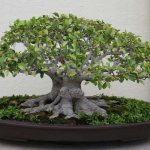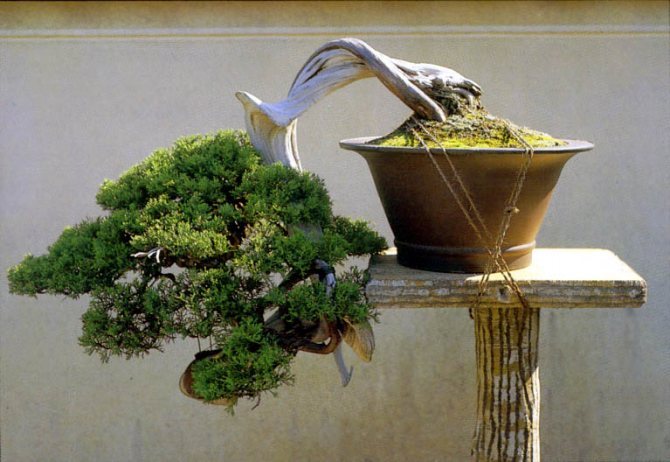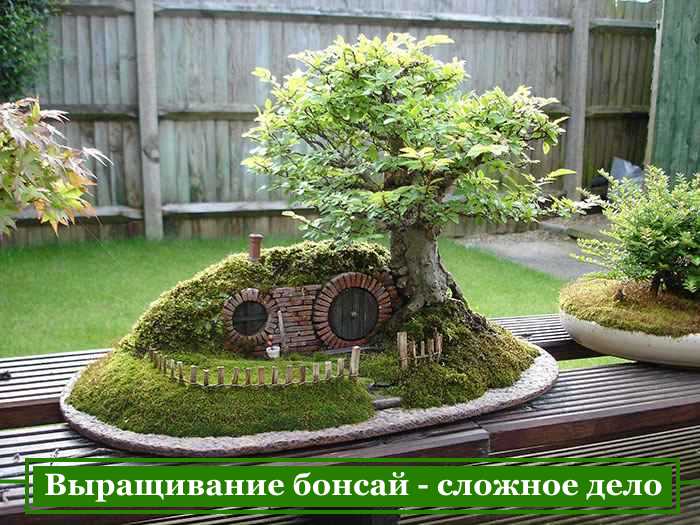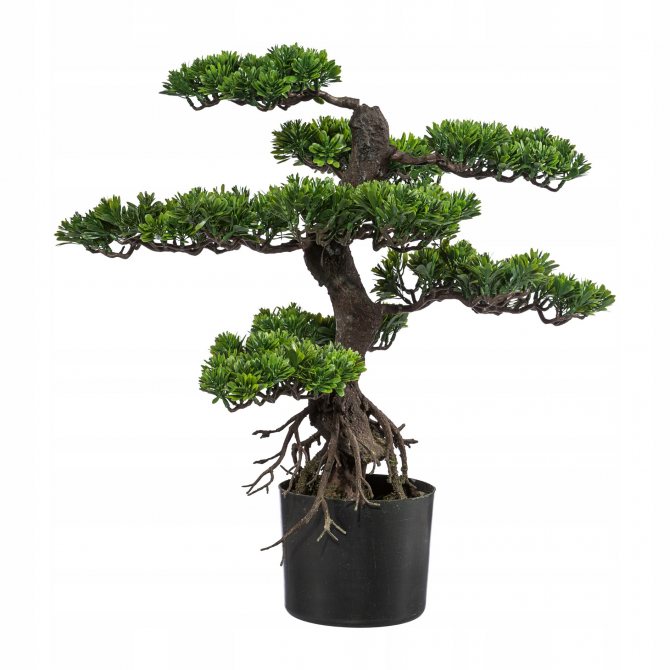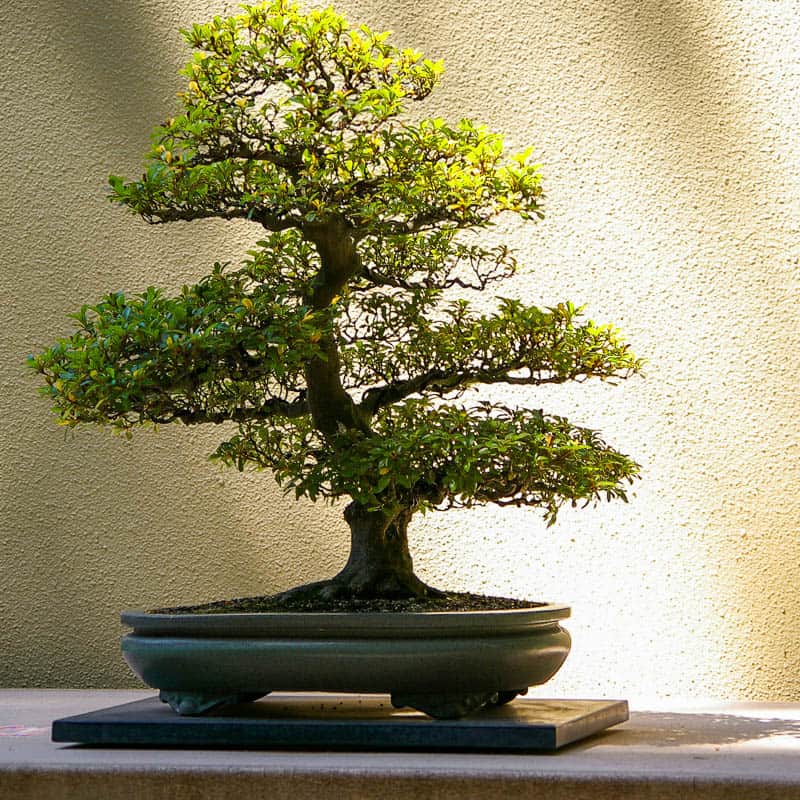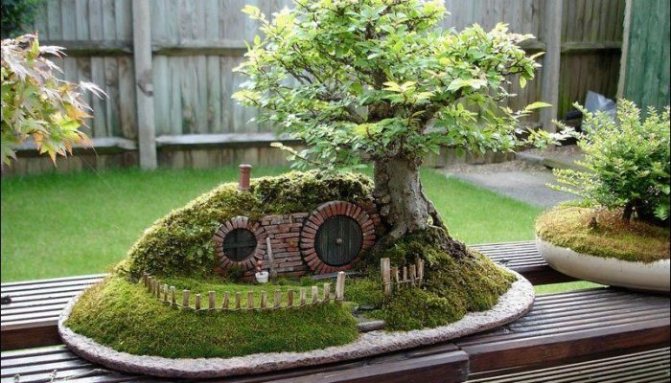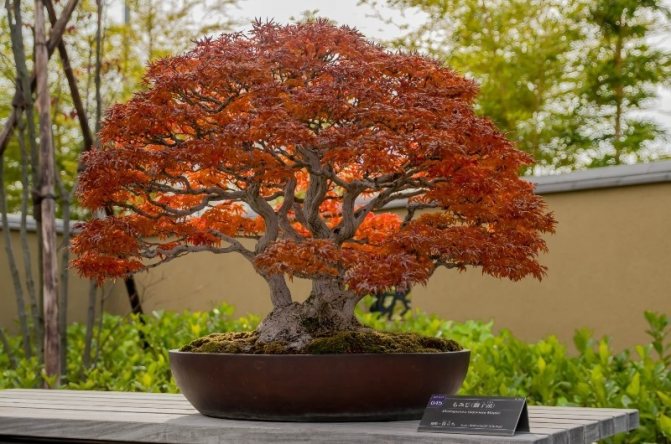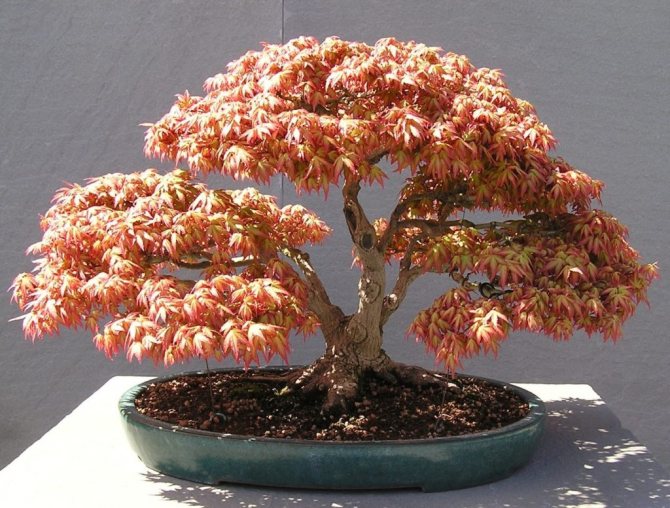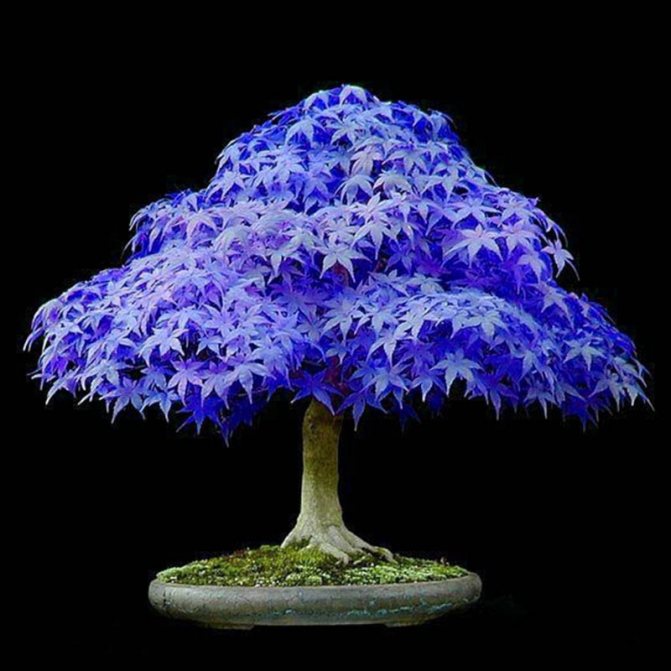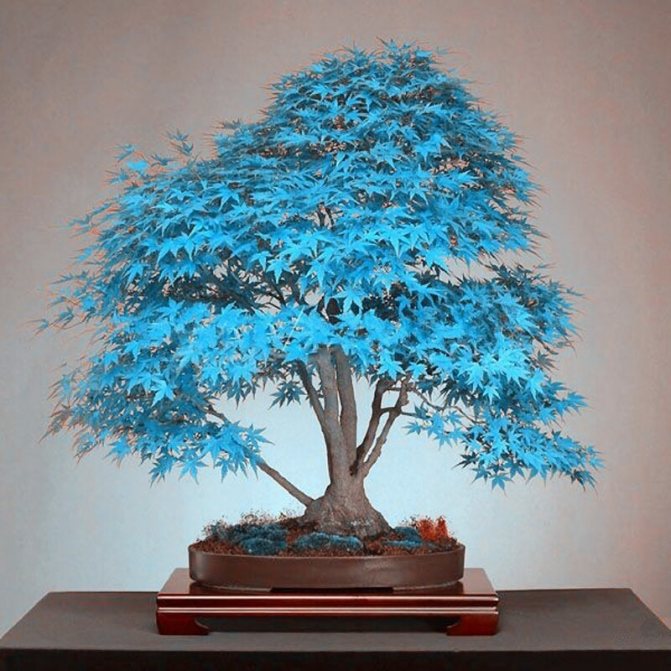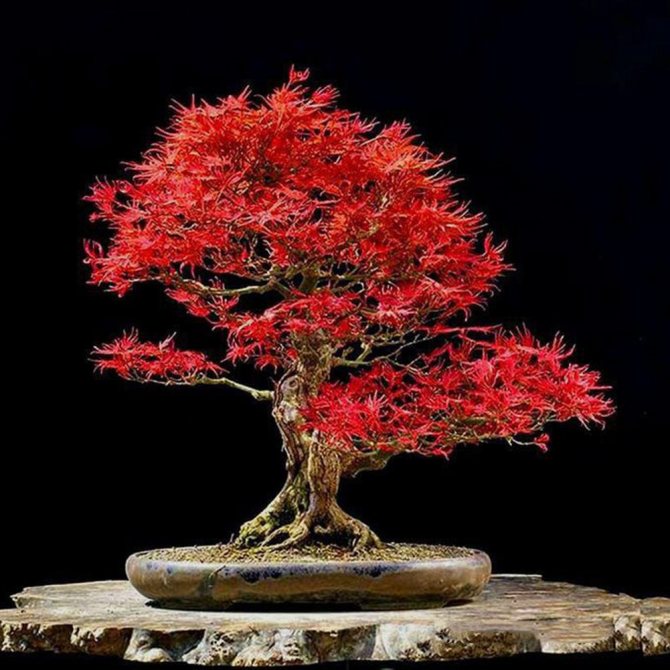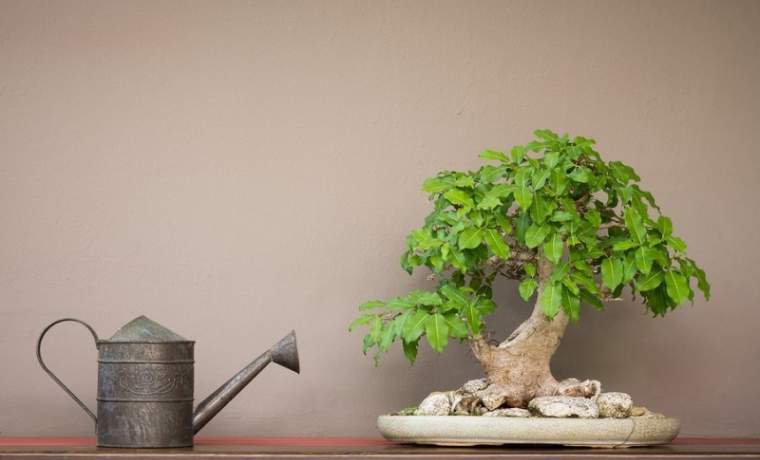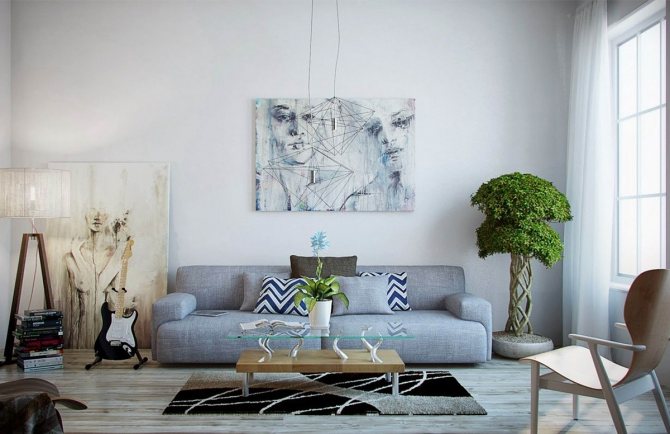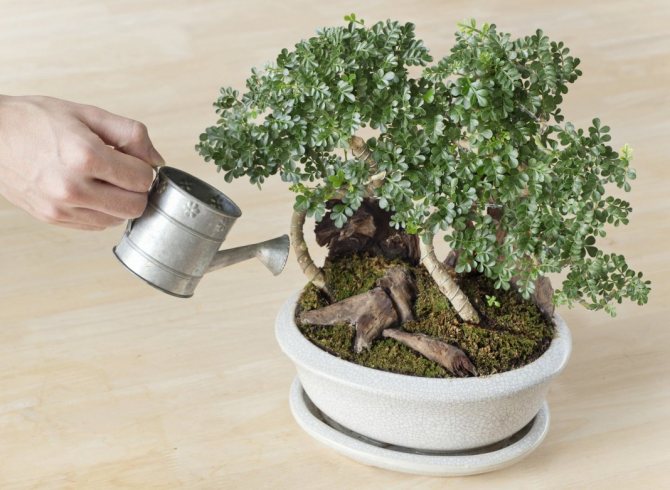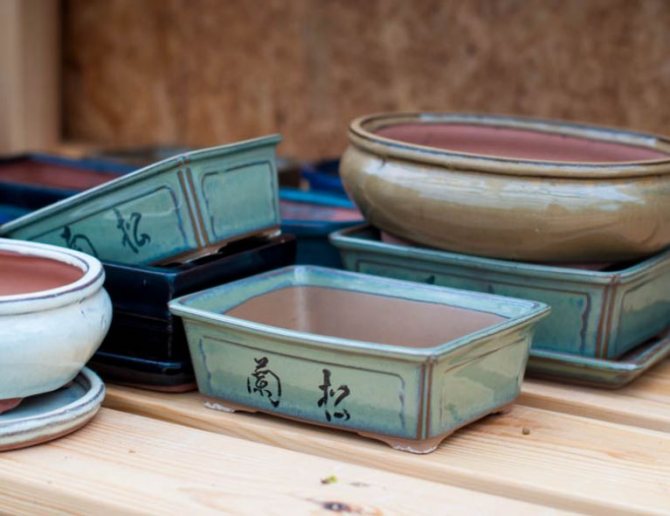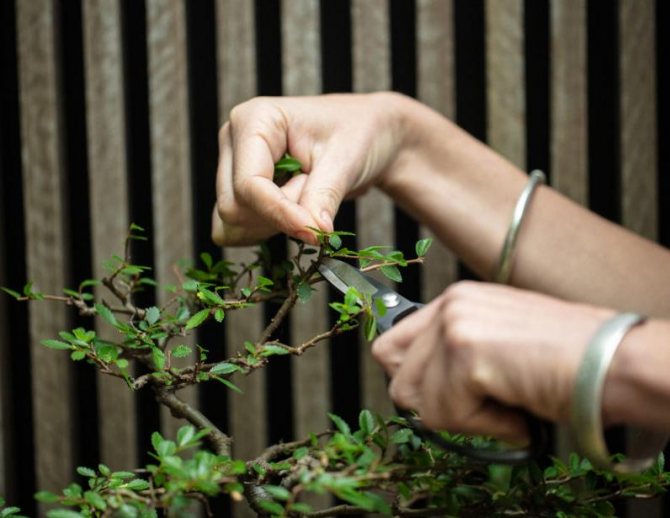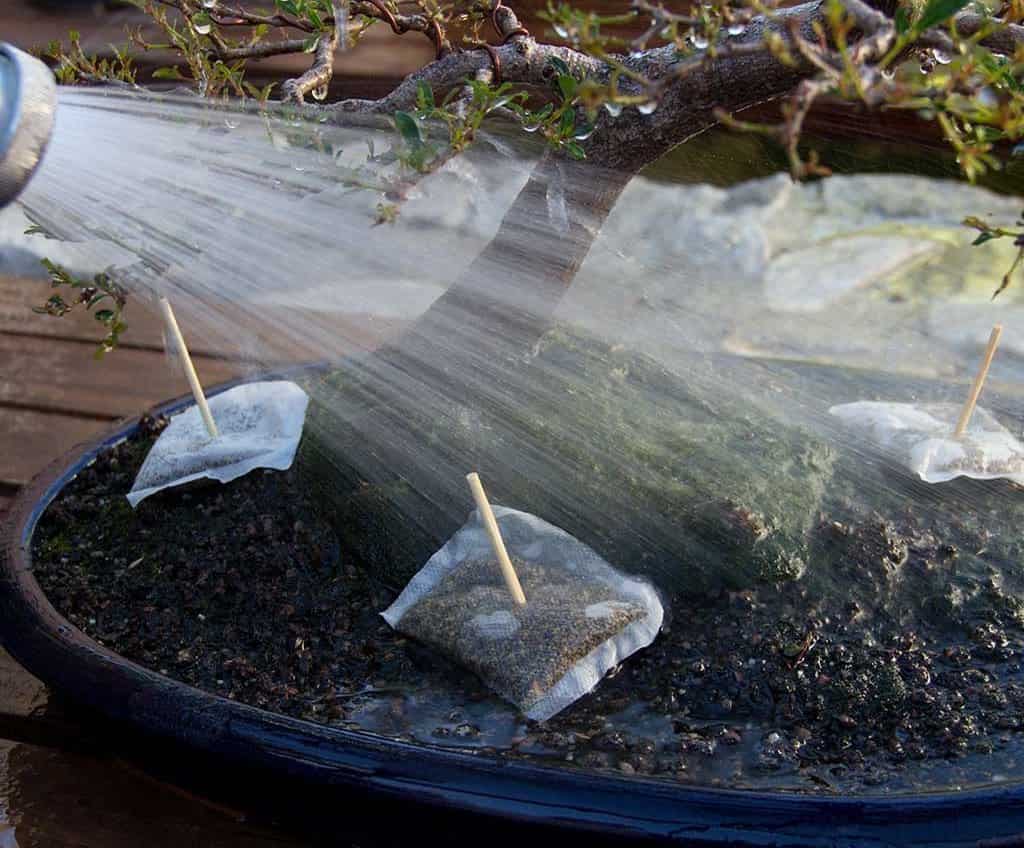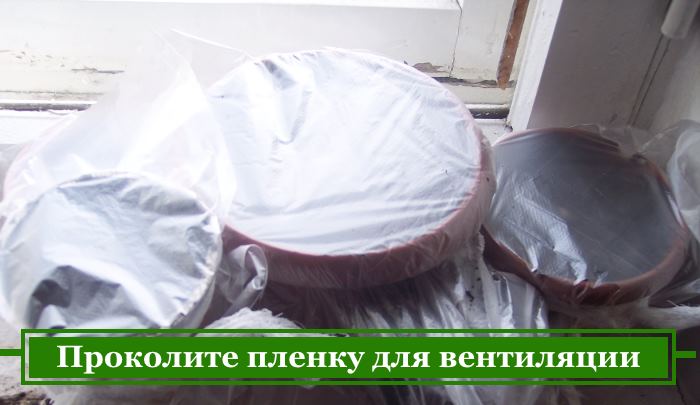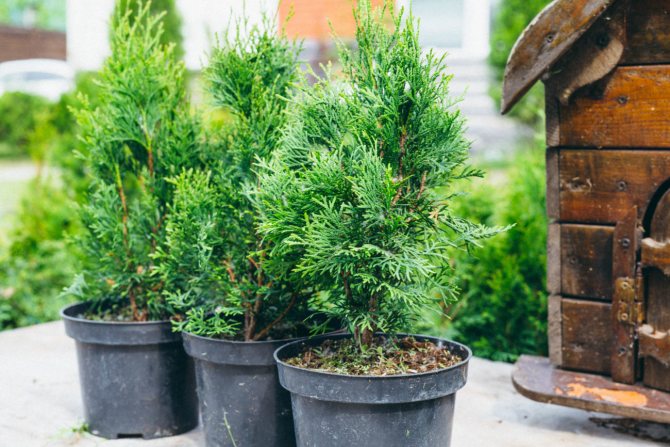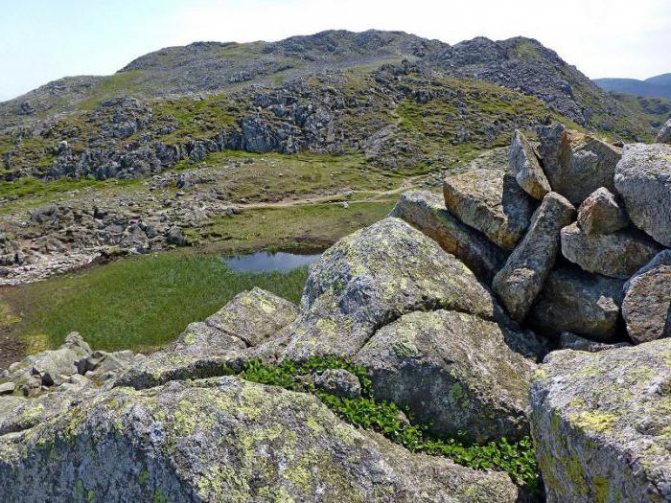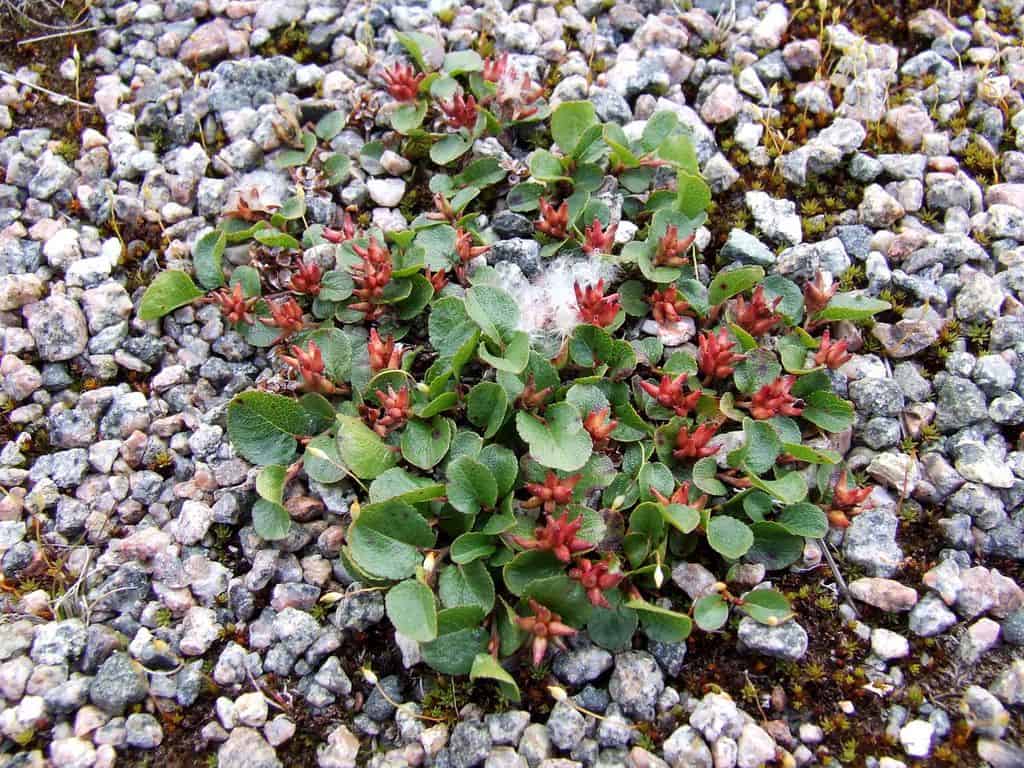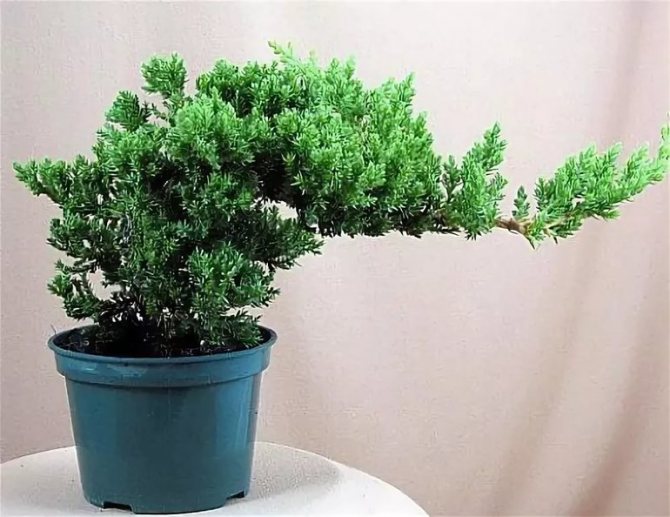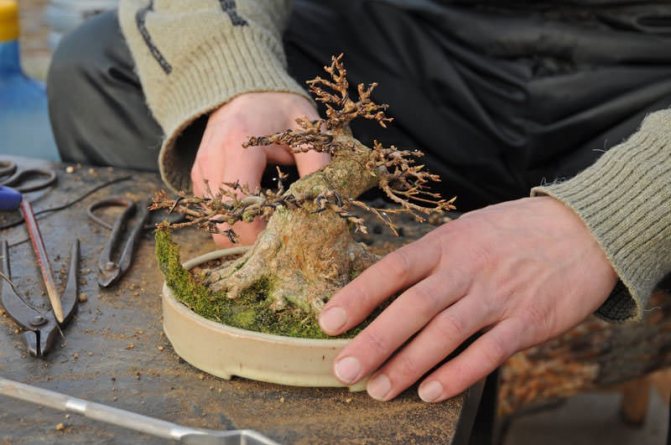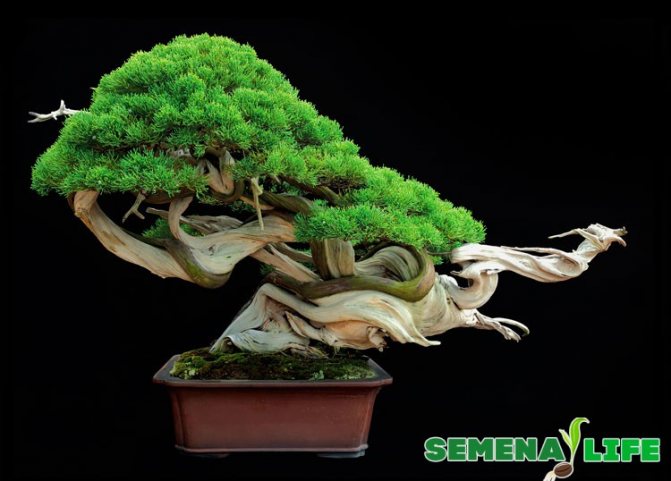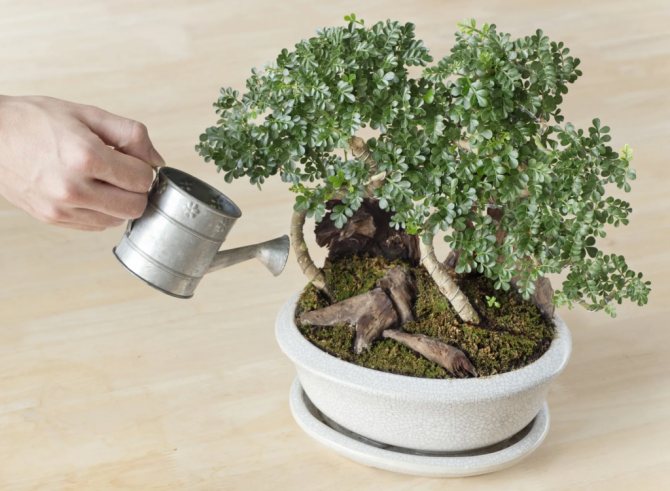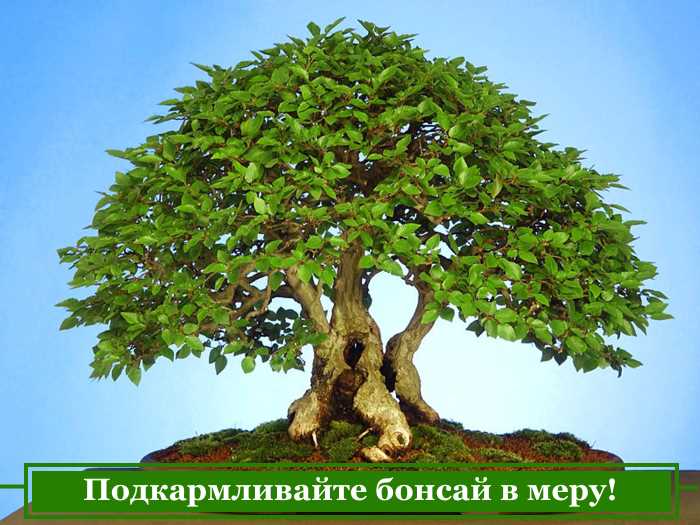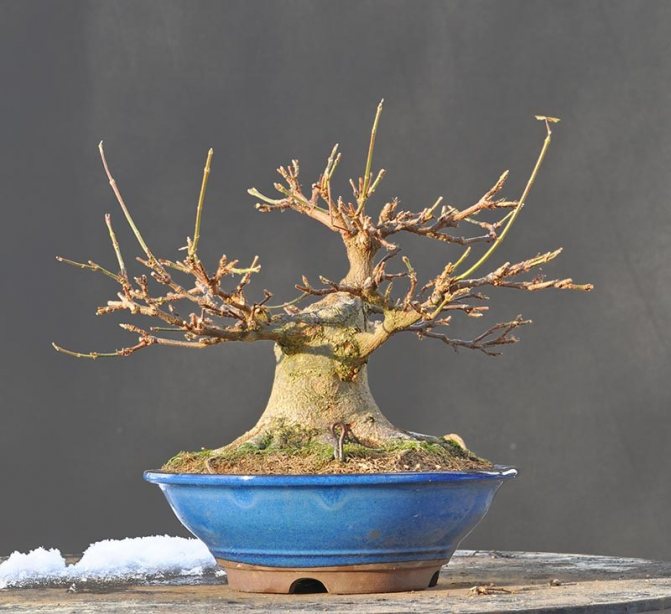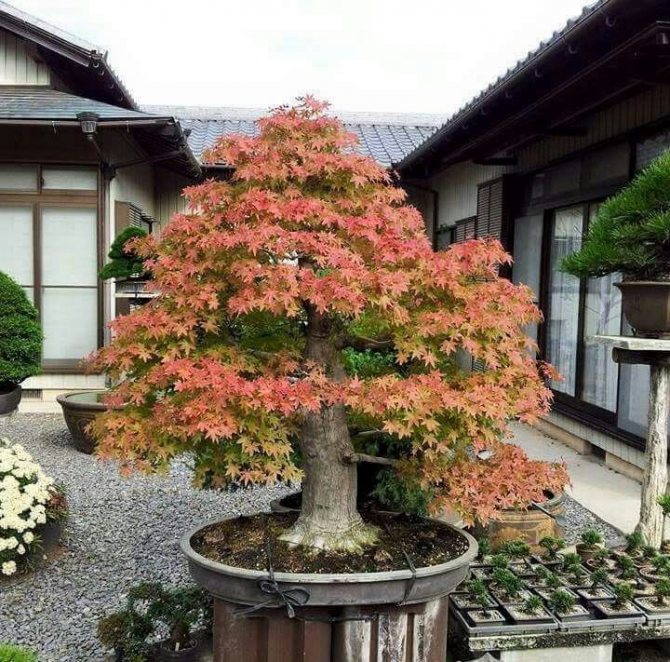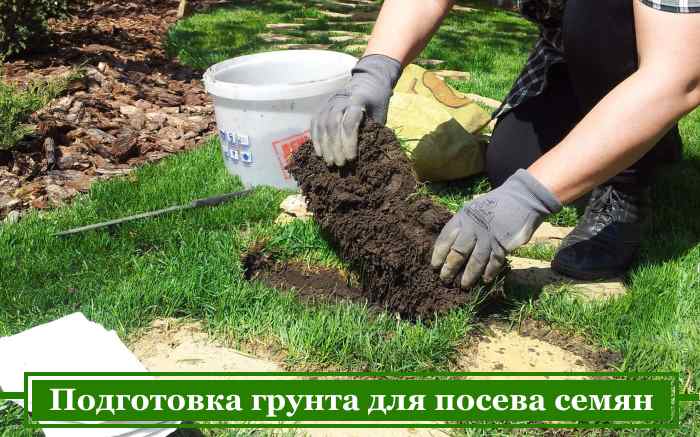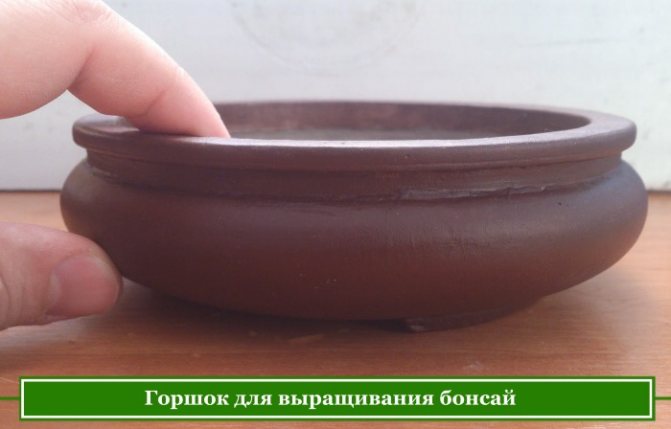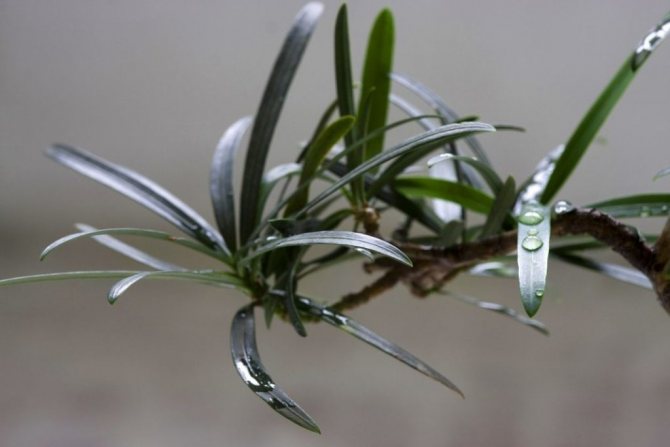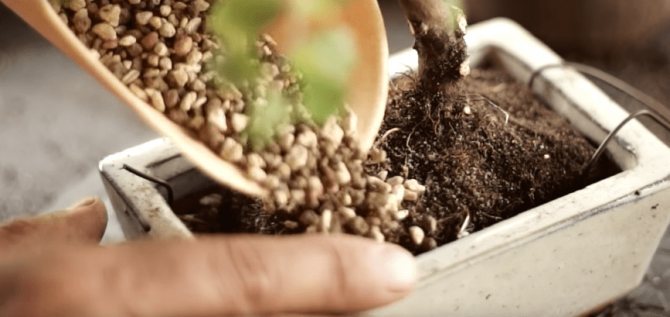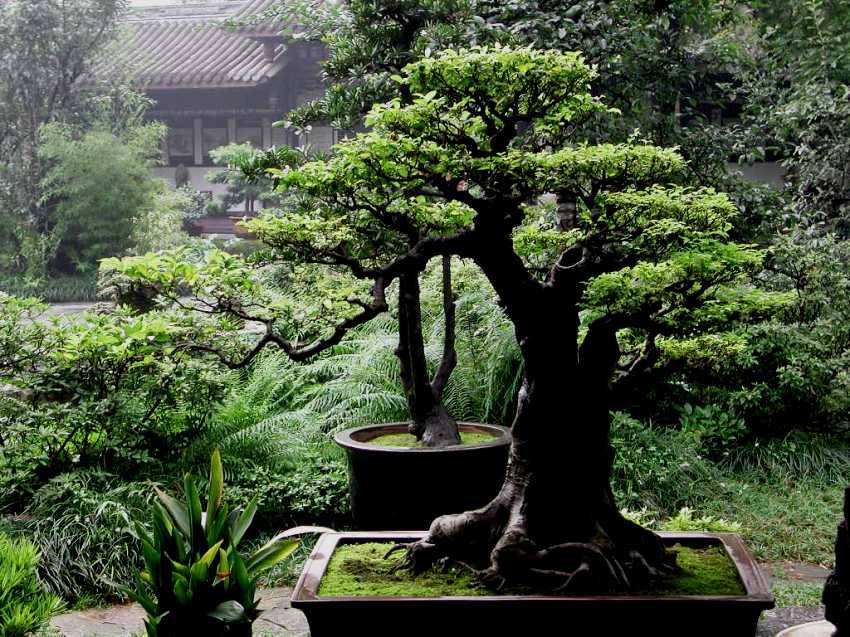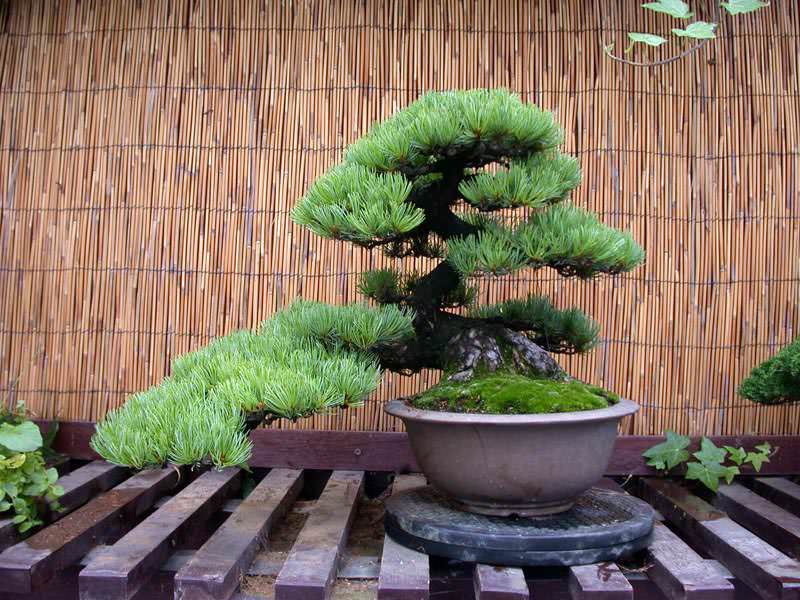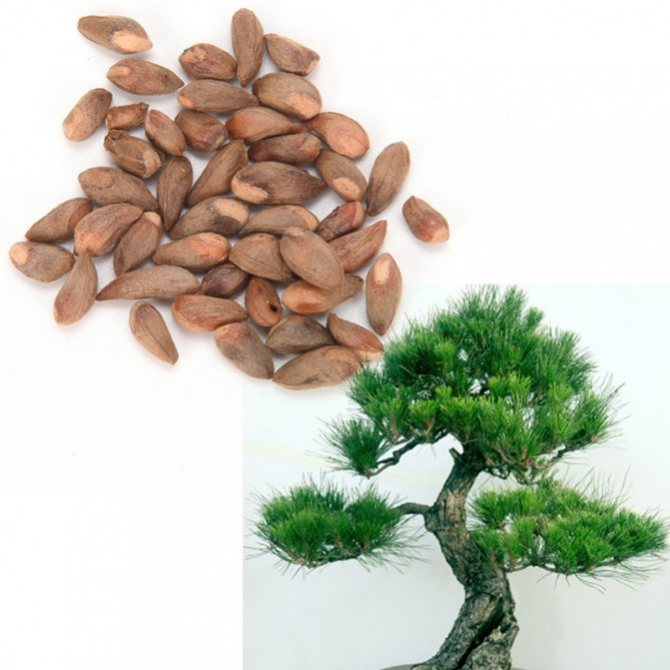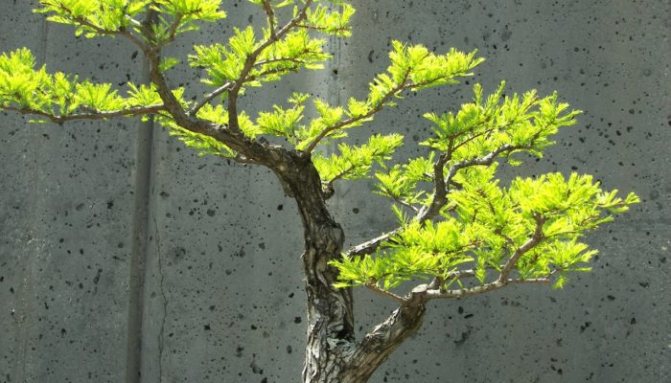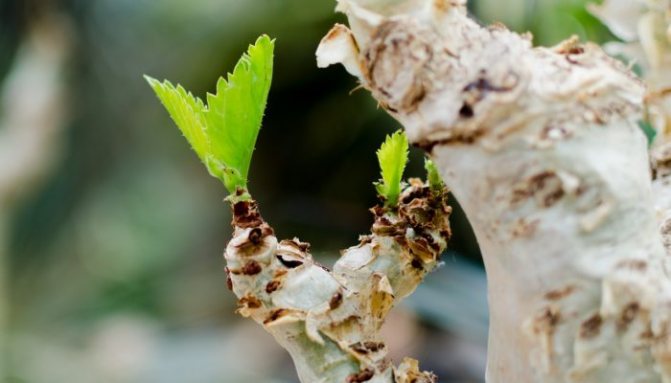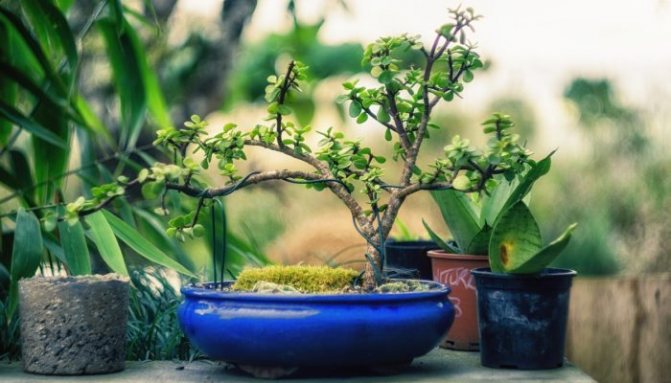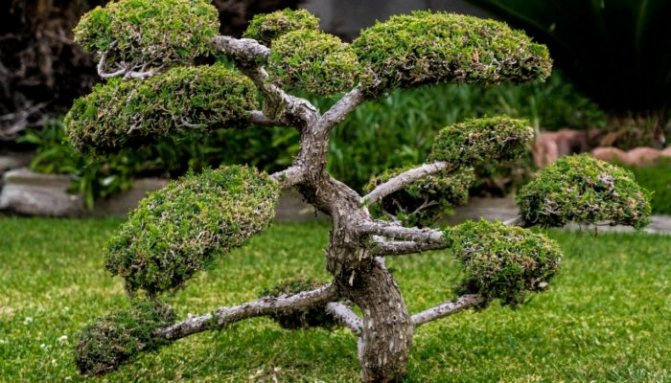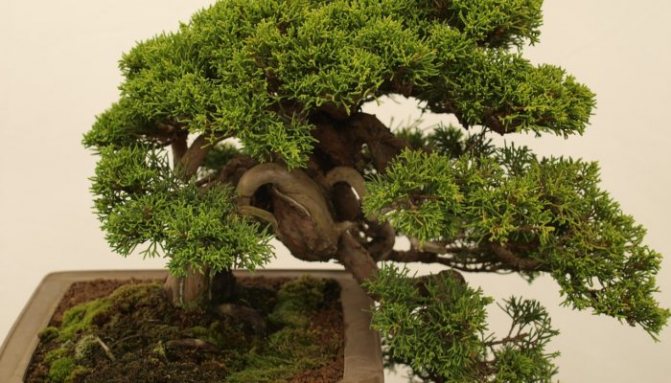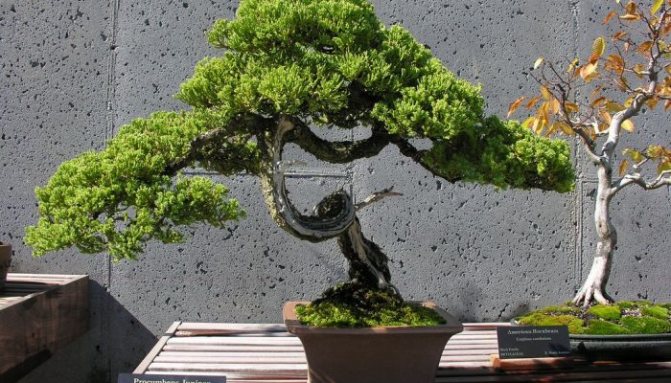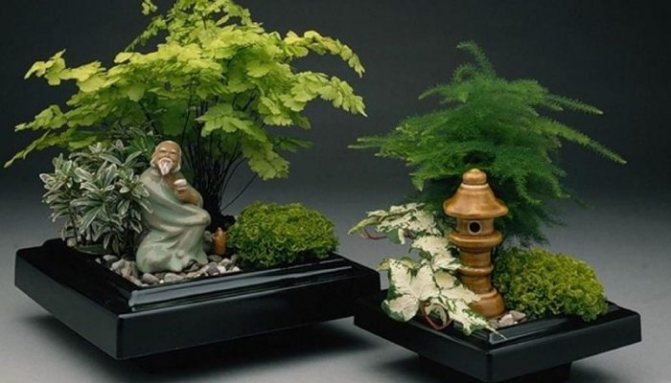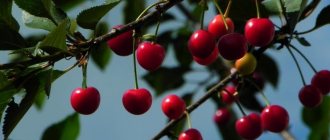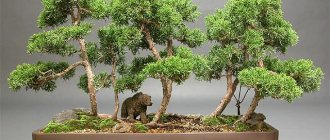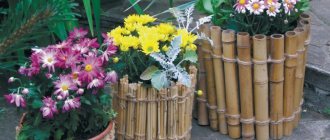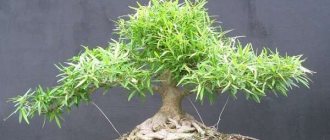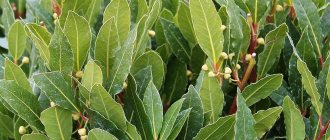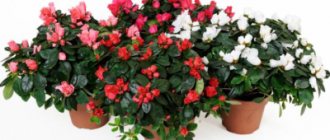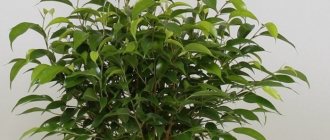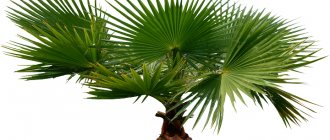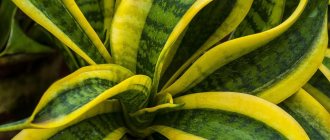Bonsai is a whole art of growing small trees of graceful silhouette, which has recently entered our lives. The homeland of bonsai is Japan. Bonsai literally means "plant on a tray." This miniature tree, grown at home, will add coziness and will serve as a wonderful decoration for the interior of every home. For growing bonsai in Russia, at home, the most popular plants are Benjamin's ficus, myrtle, and azalea.
It is not so easy to grow this type of plant at home, and only diligent, careful and patient people can do it. Do not think that once having created the shape of a tree, it will remain forever. Bonsai, like all living things, is characterized by constant growth, positive or negative changes, as well as development. In general terms, caring for this plant includes regular trimming, watering, and timely replanting.
Types of trees used to create bonsai
The material for creating bonsai can be any tree that is characteristic of a particular climatic zone. The main thing is to provide him with the necessary temperature regime, simulate seasonal changes in the weather and establish a lighting system.
Traditionally, conifers are used in bonsai. This is due to their durability. Popular types include:
- pine;
- spruce;
- thuyu;
- larch;
- cypress;
- juniper;
- oak;
- Japanese cryptomeria.
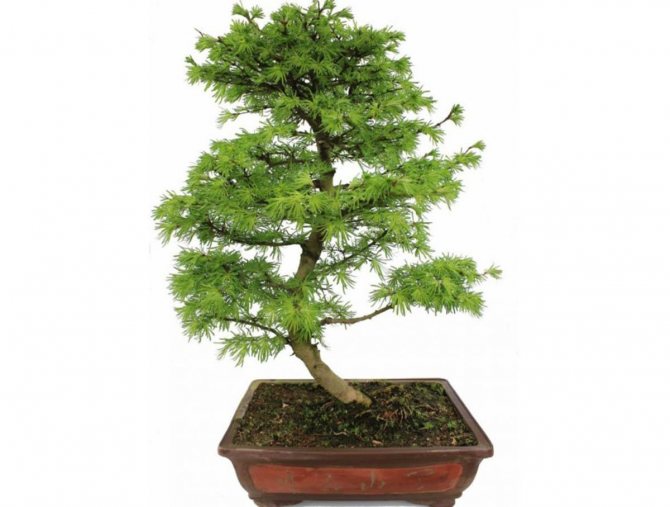
Miniature larch is suitable for both apartment and garden maintenance
Flowering and fruiting trees are also suitable for bonsai. With their help, you can create compositions of incredible beauty. Experts advise growing:
- cherries;
- apricot;
- peach;
- magnolia;
- olive;
- wisteria;
- apple tree.
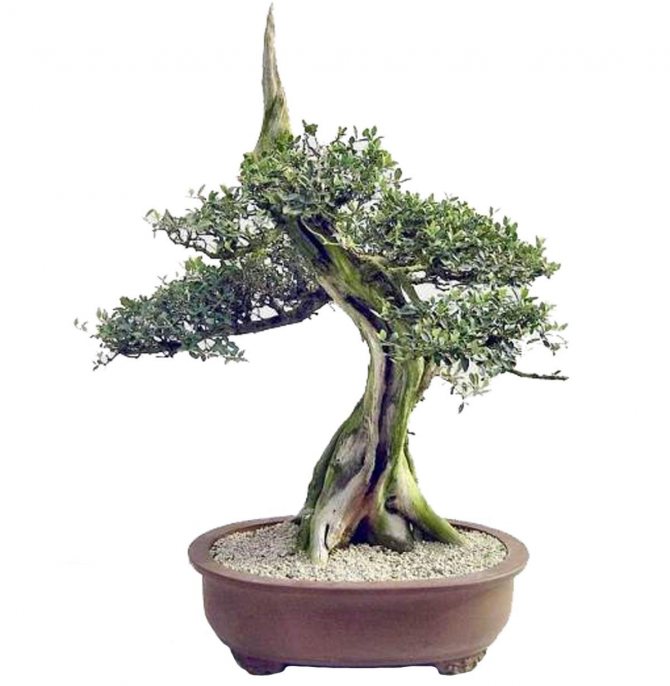

Oliva owes its popularity to the nobility and exotic forms
For your information! On the territory of Russia, bonsai from maple, oak, birch, pine, cedar and thuja are often found. These garden species can be grown at home. They adapt well to temperature changes.
It is believed that bonsai does not tolerate living conditions well, but this is not the case. If the plant gets enough light, it will adapt easily. For example, black pine bonsai can be grown both in the home and in the garden. Its survival depends on keeping the temperature cool.
There are several types of indoor bonsai. These include plants from tropical and subtropical zones. They need constant warmth and sunlight. These include:
- different types of ficuses;
- bougainvillea;
- acacia;
- hibiscus;
- allemande;
- gardenia;
- jasmine;
- Garnet.
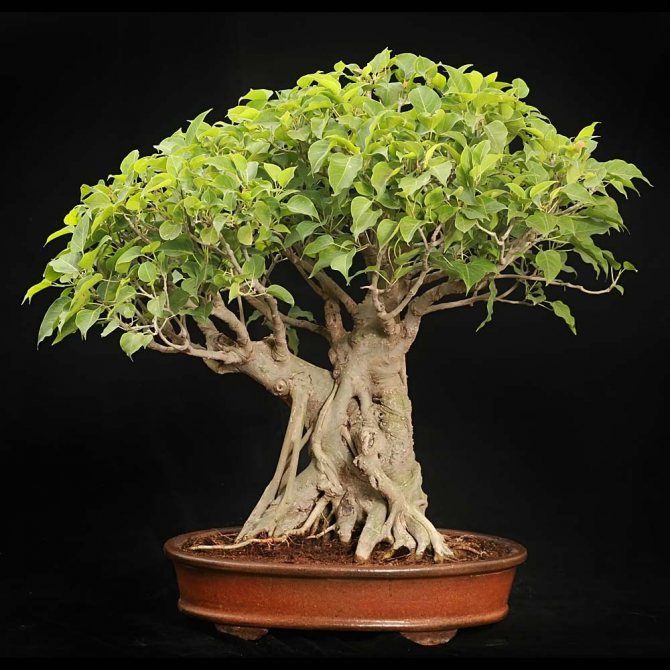

Ficus bonsai is easy to take root in apartment conditions
Important! The choice of a plant to create a bonsai should be carefully considered. Fluctuations in temperature conditions will not allow you to grow a healthy tree.
Seed selection
Of course, you can use ready-made seedlings - it will be easier. But this is not the way of a real samurai ... It will only be half your bonsai. So let's start with the seeds. When choosing them, the main criterion is your taste and capabilities. Bonsai can be grown from both deciduous trees and conifers and even shrubs. However, the choice of seeds is very important not only for your future aesthetic pleasure from admiring the miniature tree, but also for the work with the plant itself.Different trees require different conditions - some are more thermophilic, moisture-loving or cold-resistant, some less. Before you start growing bonsai, you need to know everything about the selected tree. It should be remembered that tropical plants in our latitudes are more difficult to grow, so think about whether you can arrange for them the conditions of their homeland? Also, do not forget that most of the trees in our latitudes require "wintering", if you are going to grow bonsai in an apartment and you do not have a place in which it is cold enough in winter, then you should forget about growing such trees. And in general, for a start, you should take a tree in an easier way, for example, the Chinese Elm, a small-leaved tree, is not whimsical enough and is excellent for indoor cultivation.
The meaning of bonsai in the house
Laurel tree - growing at home
Bonsai is a symbol of diligence, patience and hard work. It takes more than one year to form the root system and crown. If a tree is properly cared for, it will outlive several generations of gardeners. Bonsai is believed to be infinity incarnate.
Conifers were especially revered. They kept their foliage all year round, remaining evergreen. There are Japanese bonsai trees and shrubs that have existed for thousands of years. They were looked after by several generations of gardeners.
Home bonsai has many meanings: patience, peace of mind, peace, tranquility, hard work and love of contemplation.
Watering, feeding, wintering
The tiny trees are grown in small pots, so watering must be done very carefully. Two methods are used:
- Irrigation. Moistening the soil from a small watering can with a thin spout.
- Immersion. It is important that there are drainage holes in the bottom of the pot. The container with the plant is immersed in a basin filled with water for 5-10 minutes.
Note! For irrigation, rainwater or tap water that has stood for at least 48 hours is suitable.
For feeding, mineral complexes enriched with nitrogen, potassium, phosphorus are used. You can take fertilizers for indoor plants, but at a concentration of 50%, this will prevent excessive growth of shoots and foliage. Feeding rules:
- For the summer period, the potassium content decreases.
- In spring and autumn, formulations rich in nitrogen and phosphorus are chosen.
Preparation for winter involves cleansing the plant from affected and dried shoots, and destroying pests. Move the pots to a bright place, protected from drafts and blowing.
A bonsai garden is a dream that can come true. A variety of conifers, deciduous and even fruit trees in miniature can be grown from seeds, the main thing is to follow the recommendations.
Bonsai tree care at home
Is sea buckthorn a tree or a shrub? Growing sea buckthorn at home
Bonsai requires careful maintenance. In the room with the plant, the temperature regime must be observed. It fluctuates between 10-18 ° C. The soil for planting is made up independently. A mixture of humus, clay, humus and river sand is considered traditional.
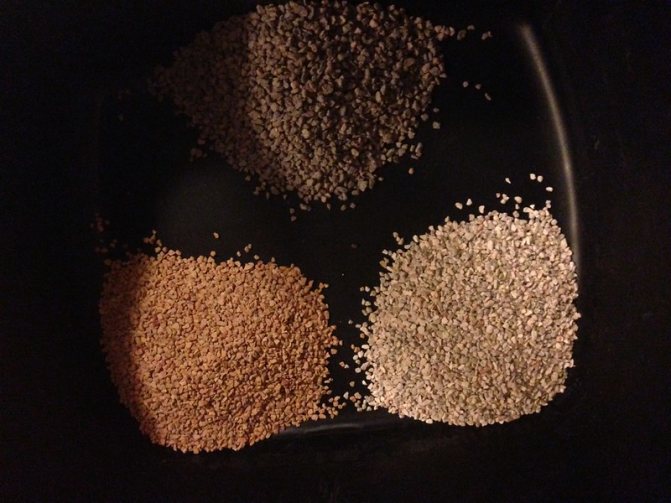

Three-component composition of the substrate
Important! Bonsai are placed away from heaters and batteries. It needs high humidity.
In addition to creating an artificial microclimate, you will have to take care of the ventilation system. The tree can die from the slightest draft, so the room must be isolated from cold air currents. Lighting is also important: direct sunlight is destructive for bonsai. For each tree, lighting is selected separately. It will depend on the natural habitat.
To grow any bonsai, you need regular watering. The amount of water should be moderate.
Important! During the formation period, the tree needs frequent watering. Dry soil will lead to the death of the tree, and excessive watering will provoke decay.
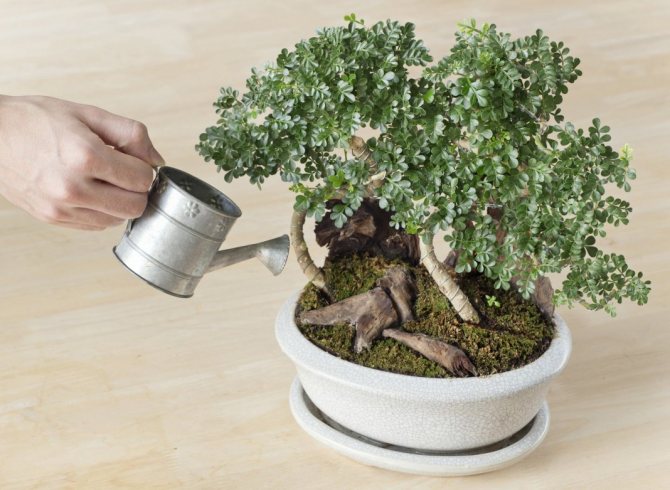

The key to the health of bonsai is moderate soil moisture
The beauty of a bonsai depends on how well its crown is looked after. To keep it in perfect condition, branches and leaves are regularly pruned. Bonsai are transplanted every 3-4 years.
Disease and pest control
If you take the matter seriously (otherwise it makes no sense), you must initially bear in mind the readiness to fight pests and diseases. Scientists have not yet figured out how to care for a bonsai flower without performing these sanitary tasks. The risk of various lesions is no less great than that of ordinary indoor plants.
Description of the mountain pine Mugus, planting and care features
For the preservation and development of the plant it is necessary:
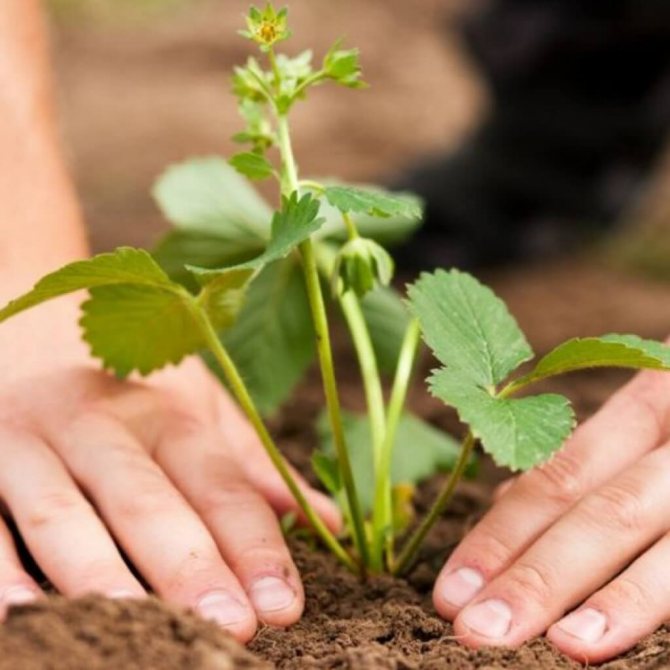

Inspect bonsai on an ongoing basis.- If detected, immediately remove pests and then spray with a suitable product.
- If aphids or scale insects have shown themselves, such spraying should be done at least three times (every other day), not forgetting about the subsequent rinsing.
- Adult trees can also be affected by the bark beetle. You can calculate it by the holes in the barrel. The affected bark will have to be removed. And for a complete victory over the pest, a long-term (up to two or more months) treatment will be needed.
- A fungus such as powdery mildew can also make itself felt. As a rule, this is a signal of excessive watering and problems with air circulation. Medicines will still have to be used, but first of all it is necessary to resolve the issue with the conditions of care.
Despite the various difficulties, bonsai can be a real occupation for years and years to come. What could be more entertaining than going from planting the first "prototype" to creating your own decorative garden? There are examples when in Russia people were able to make this occupation a real profession... Although this, of course, is not the main thing.
How to grow a bonsai tree at home
DIY bonsai - grow plants at home
There is no one-size-fits-all guide on how to grow bonsai with your own hands, the plan of action depends on the type of plant.
Bonsai tree care secrets
Comfortable temperature for dwarf trees is 18 ° C to 25 ° C. We are talking about the active growth phase. In the winter, bonsai needs a drop in temperature. If you neglect this rule and do not change the climate to "winter", the plant will quickly wither away. The minimum temperature for conifers is 10 ° C and 12-14 ° C for deciduous ones.
Lighting for the plant is vital. Bonsai thrives in bright, diffused light. Direct sunlight is contraindicated for them. To properly organize the lighting, you need to find out from which climatic zone the plant originates. Some like partial shade, and some like long daylight hours.
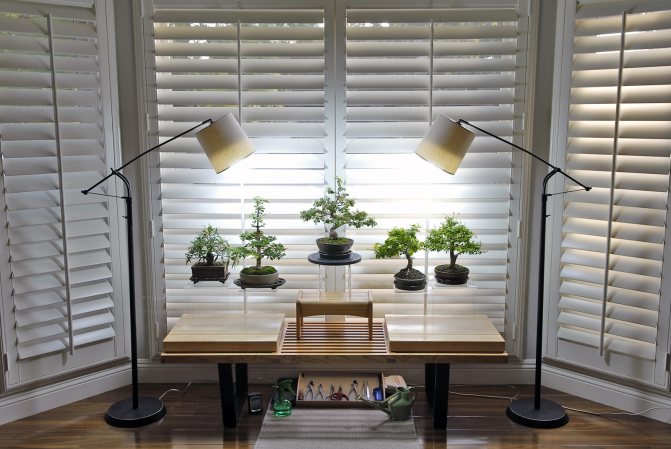

Diffused light protects the plant from thermal burns and overheating
Most bonsai species are hypersensitive to humidity. If the room does not have a professional humidification system, you will have to use the available means. For example, place bowls of water around the perimeter and spray the tree daily.
Watering bonsai should be done according to the rules. This is due to the shape of the growing pot, which resembles a lotus leaf. The roots must receive enough moisture: if they dry out, the plant will die right there. However, you should not be zealous with watering: soil acidification will do no less harm.
Important! Experts advise to reduce the amount of watering in winter. Deciduous species are watered with a small amount of water, and for evergreens they reduce the moisture content of the substrate by 2 times.
Water the bonsai from above using a spray nozzle. Some experts advise the immersion method: the pot with the plant is lowered into a container of water, the substrate is saturated with moisture, and the water flows through the holes.
How long does a bonsai tree grow from seeds?
Growing a tree from seeds is a laborious and time-consuming process, it takes from 15 to 30 years. Bonsai are often inherited.
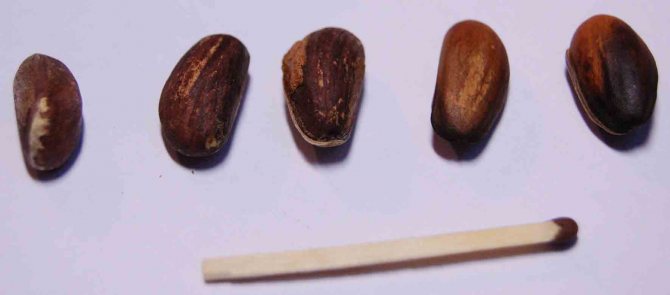

Germinating bonsai from seeds will take decades
What conditions are needed for growing
It is no secret that a bonsai seedling can be bought in a nursery. However, there are plants, the formation of which must be controlled from an early date. These include, for example, elms. Without outside intervention, the crown will not form properly. If it was decided to use seedlings, their height should not exceed 20 cm.
Seeds or seedlings are planted in a low but deep pot. Its volume should exceed the volume of the root ball. In addition, the container must have a hole for water to drain. The substrate is mixed from 3/5 garden soil, 1/5 coarse sand and 1/5 peat. Immediately after planting, the first pruning of the branches is carried out - only horizontal ones are left.
For your information! Bonsai is planted in the fall. This is necessary for the adaptation and proper rooting of the plant.
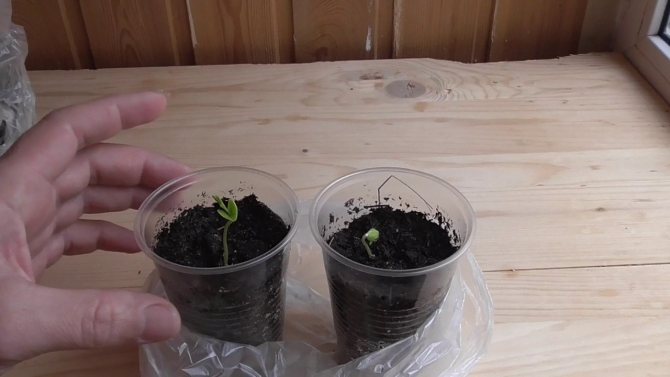

Seedlings are easy to destroy in the first months of life, so they require careful care.
The crown is trimmed regularly. The height of the branches should not exceed 30 cm. To slow down the growth, small cuts are made on the trunk. This regulates the circulation of the juice.
Transplant bonsai every 2-3 years to remove excess roots. The growing container is left the same. This will keep the tree at its miniature size.
Features of growing bonsai
The branches and crown are formed with the help of a wire. It is applied to the branches or turned into a tension structure that changes their direction.
The hardest thing is to wire the softwood. It is fixed on each shoot (to the very top). Deciduous plants can be corrected by pruning branches. On smooth-bore trees (such as maple), the wire is not left for long, otherwise it will leave marks.
Trees with rough bark, such as pines, are less likely to show marks. However, the wire should not be allowed to grow deep.
Important! Wire strapping is carried out in autumn or winter. It should coincide with the pruning of excess shoots.
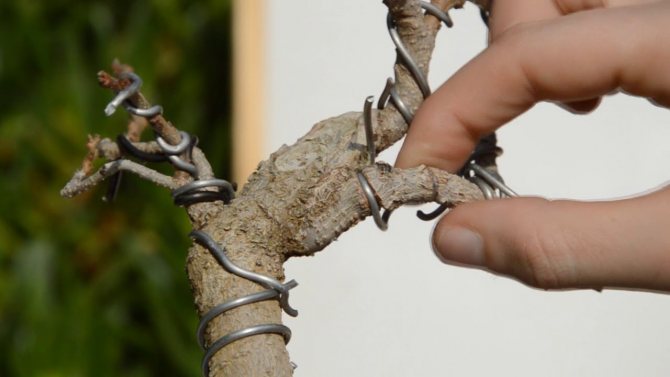

Wire wrapping gives the plant the desired shape
The materials used are specialized copper-coated aluminum wire. Its thickness should be equal to a third of the thickness of the branch.
Transfer
It is recommended to replant the tree in 2-3 years. The procedure is carried out in early spring (March-April). But some breeds prefer to be transplanted in the fall. The principle of choosing a container and substrate is the same as for the first planting.
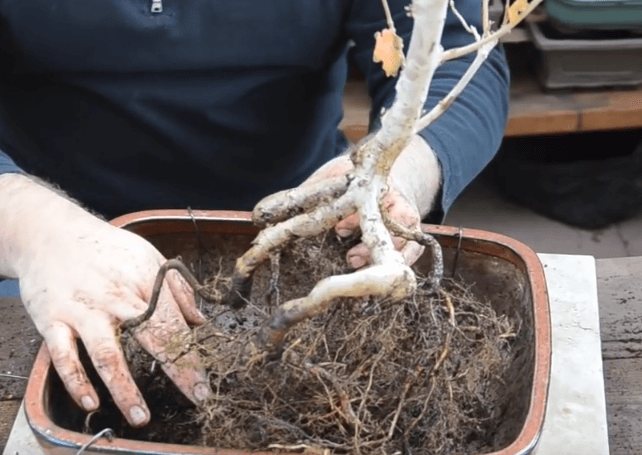

Transplanting is an infrequent but important element of bonsai care
With the help of a special tool, the root system is cut off, after removing excess soil from the processes. Set the plant in a new substrate and lightly press down on the soil around the trunk. For more stabilization during the rooting period, a stone can be placed under the trunk.
Bonsai trees: types and features
As mentioned, bonsai can be created from almost any tree. The main thing is to organize for him conditions close to natural ones.
Pine bonsai. Species: mountain, common, Japanese white and black. Needs plenty of sunshine in spring, summer and autumn. The pine is regularly watered with a small amount of water. They are fed every month. Transplanted every 4-5 years. Pine propagates by seeds and cuttings.
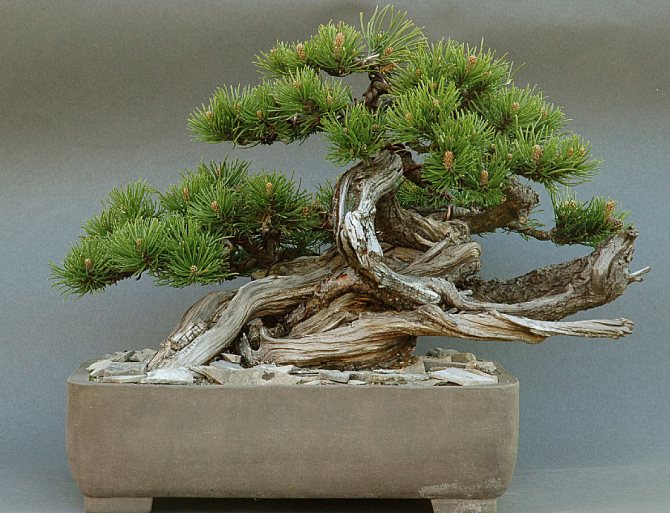

Pine is a traditional tree in bonsai culture
Maple bonsai. Species: Japanese, holly, field, rocky, palm-shaped (not to be confused with red). Ornamental maple varieties are sensitive to sunburn, temperature extremes and wind. Without light, they quickly grow dim. To keep the color vibrant, you need to place the bonsai in a well-lit area. In summer, it needs abundant watering, in winter, the need for moisture is sharply reduced.
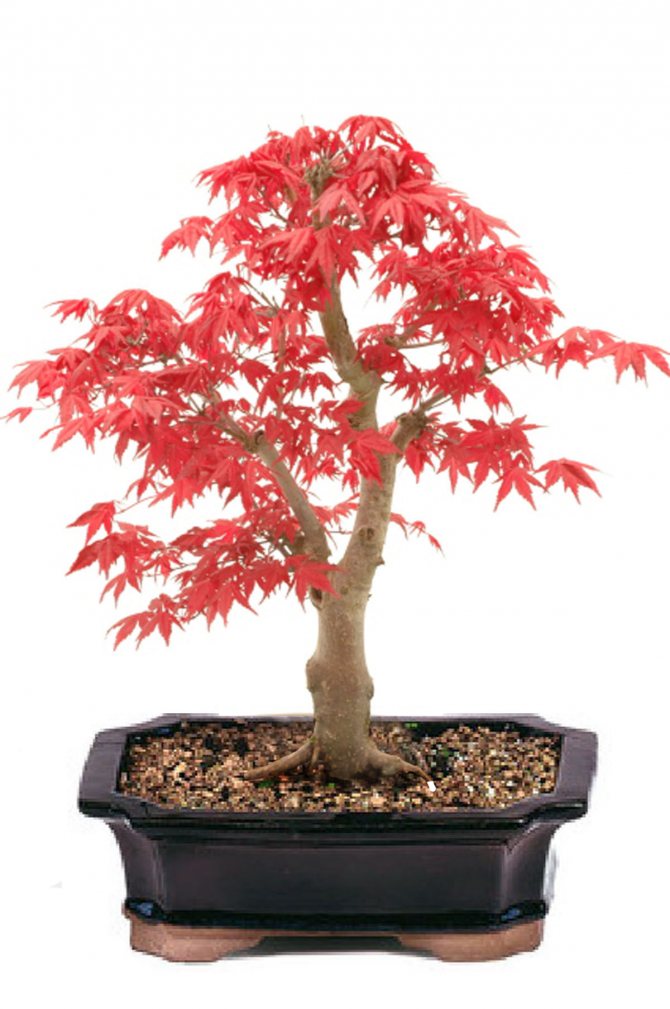

Despite the miniature size, maple leaves retain their familiar shape.
Oak bonsai. Species: beech and northern. Ideal for forming branches with wire. They need bright lighting. In winter, oak is kept at temperatures from 5 ° C to 15 ° C. The higher the room temperature, the more water the tree needs to be.
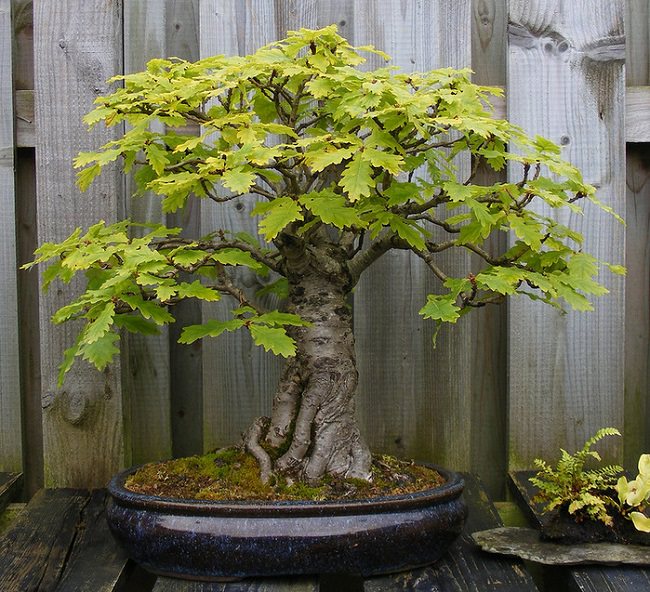

Oak needs particularly careful maintenance
Bonsai from birch. Species: warty, drooping, fluffy, crying. The height of the cutting should not exceed 80 cm. The parameters of the pot are: height - 10 cm, diameter - up to 45 cm. The skeleton is formed by pinching. It is not recommended to prune large branches from spring to late summer.
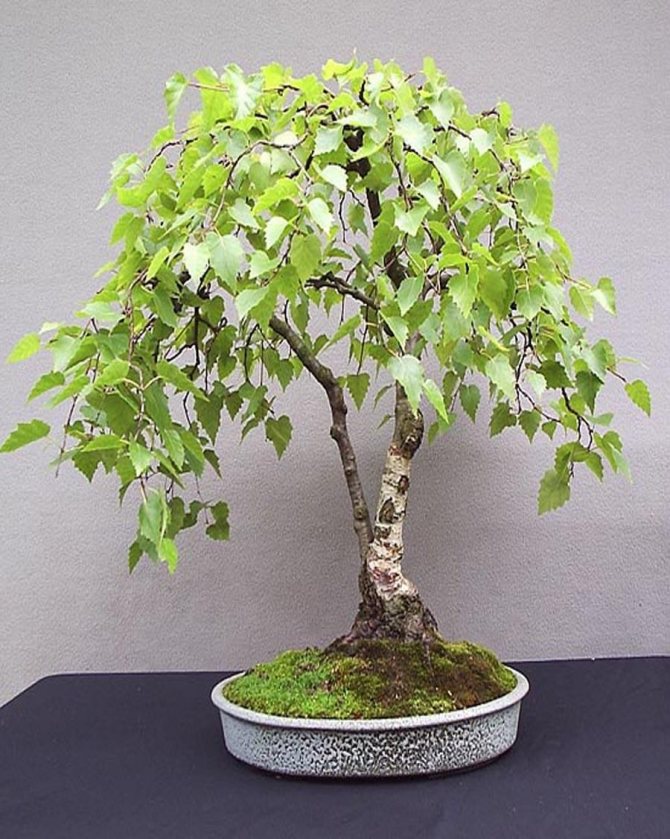

Birch has a lush and spreading crown
Ficus bonsai. Species: Bengali, ginseng, figs, microcarp, dark-leaved, rusty red. The root system is formed by multiple pruning of the main shoot. The trunk can be tied up or adjusted with wire. Loves sunlight, does not tolerate sudden changes in conditions.
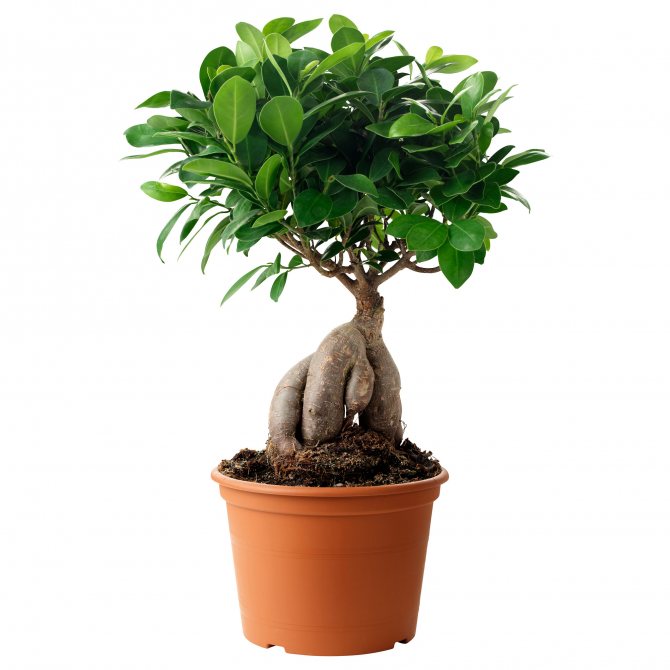

Ficus quickly gets sick from temperature changes
Sakura bonsai. Grown from seeds. In summer, pour half a glass of water daily. They prefer bright lighting, do not tolerate cold and drafts. The recommended diameter of pots is up to 20 cm. Likes soil with a high content of nitrogen, humus, potassium.
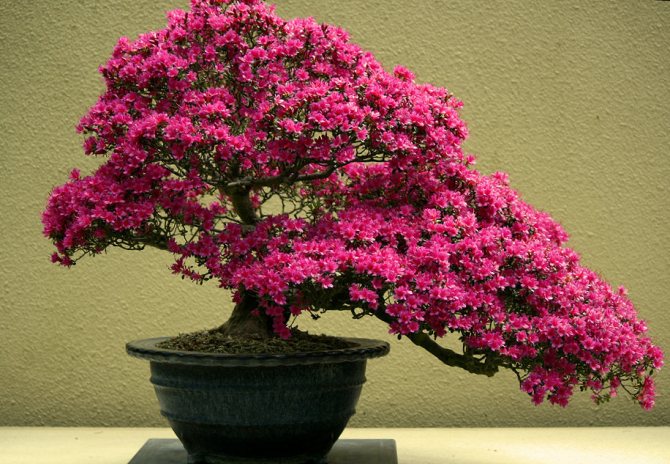

One of the most spectacular and difficult to care for bonsai
Thuja bonsai. Types: blue, golden, pyramidal, dwarf, cushion, spherical. The top is formed by a cone or tiers. The bottom of the pot must be lined with a drainage layer. Surplus roots are cut every 3-4 years.
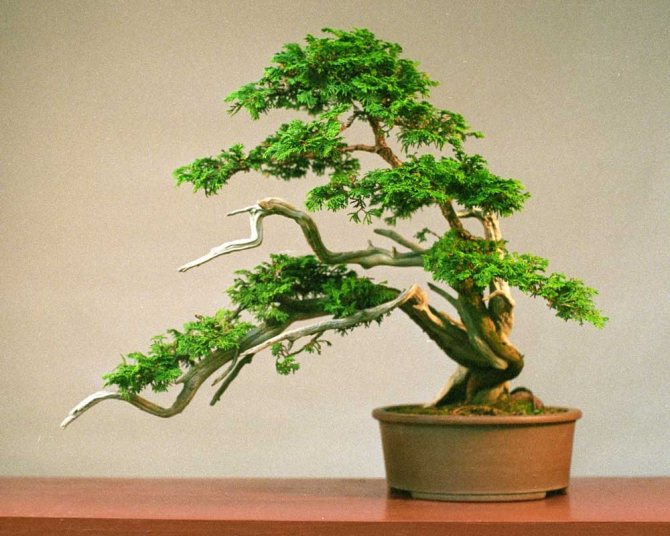

Thuya prefers garden maintenance to indoor
Cedar bonsai. Species: Japanese, Lebanese, Himalayan, dwarf. Extremely sensitive to moisture. Roots rot very quickly when over-watered. In the spring, it is necessary to fertilize the cedar with substances with a high nitrogen content. The Himalayan cedar loves partial shade, other species - bright light. If the tree is healthy, its needles will cast blue.
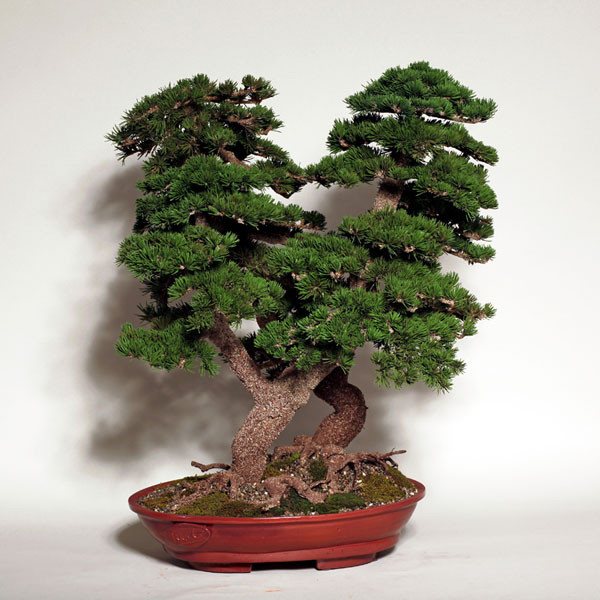

Cedar needs additional feeding
To grow a bonsai with your own hands, you need to take into account the characteristics of each tree species. A small mistake will negate years of effort.
Selection of soil and pot
To grow a beautiful bonsai on your own, you should carefully select not only the material for planting, but also choose the right pot. Seeds should first be germinated in small peat cups, several crops for the composition can be rooted in a flowerpot with drainage. Today bonsai is grown in pots, which can vary not only in shape but also in depth.
Miniature crops look equally beautiful in oval, rectangular or round containers. The containers can be deep or flat. When choosing a pot, it is necessary to be guided not only by personal taste preferences, but also by the rules for placing plants. Trees that will grow with a slope need a stable container to keep the pot from falling over. The best option would be deep containers made from heavy raw materials.
The color design of the bonsai pot can be any, the external attractiveness of a dwarf plant can be emphasized by bright colors and calm monochromatic products.
The design of the container will be more correctly selected depending on the style of the live composition in it. Bushy trees will look great in flat and wide containers. Cascade crops are usually grown in narrow and tall flowerpots. Regardless of the color and shape, before rooting plants in a container, it should be disinfected by treating it with boiling water, which will kill bacteria and fungi, if any, on the material.
For miniature crops, it is also necessary to pick up the soil. As a rule, growers will root the sprouted seeds in a special potting soil mixture designed for bonsai.It is not often sold in gardening shops and is called "akadama". The soil is rich in nutrients and therefore very heavy. In addition, the soil is distinguished by a high level of moisture, as well as excellent aeration. Pure soil is used very rarely.
Often, the soil for miniature trees is prepared independently by mixing a nutrient substrate with granular clay, sand and humus. The proportions are selected depending on the type of plant being grown. Based on the varieties of crops, the soil can be as follows:
- for deciduous trees: 7 parts of turf, 3 parts of sand;
- conifers: 4 parts of sand and 6 parts of sod soil;
- flowering miniatures: 7 parts of turf, 3 parts of sand and 1 part of humus.
In addition to collecting planting material for bonsai on your own, you can also make the soil for it yourself. Sod land is easy to find in a meadow, taking for your needs land from the middle layer, which will be more suitable for culture. Before use, it must be cleaned of residues of other plants and weeds, and also sieved through a sieve. As for the rest of the components for preparing the substrate, coarse-grain sand will be needed, since it will provide the earth with proper air circulation, and will also allow it to retain moisture for a long time. Humus is sold at any flower shop. Before using the resulting soil mixture, it must be disinfected by calcining. For these purposes, you can use a kitchen oven.
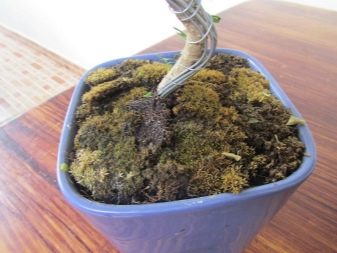

How to grow bonsai at home from pine
Pine is a bonsai typical for both Japan and Russia. Japanese black pine is especially popular. It has a beautiful bark relief, is resistant to adverse conditions and does not require a soil rich in minerals.
How to plant a bonsai pine tree from seed
It will take 20-30 years to grow a small pine tree from seeds. Sometimes this period is reduced to 15 years. To successfully grow bonsai from seed, it is recommended to draw up a step-by-step program.
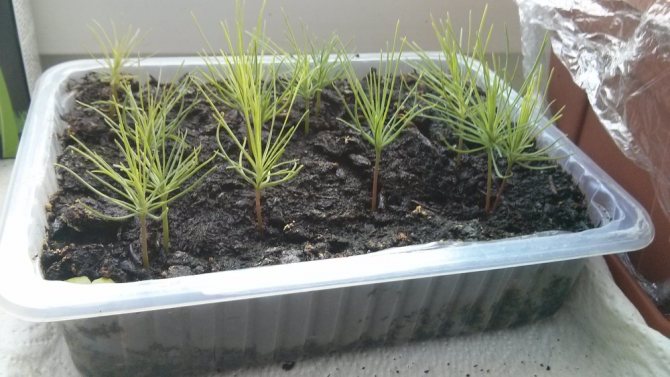

Viable pine seedlings are durable and unpretentious
Planting stages:
- Pine seeds are stratified for 1-3 months. For sowing, prepare a container 15 cm deep. Its bottom is covered with a three-centimeter drainage layer. The remaining volume of the container is filled with coarse sand. It is recommended to bake it before use. On the surface of the soil, furrows are made with a depth of 2 cm. A distance of 3 cm is left between them. Fine sand is needed to fill the seeds.
- Seeds are sown in late winter - early spring. They are laid out at a distance of 3 cm from each other, covered with fine sand (previously disinfected). Watering is best done by immersion. Some experts advise covering the pot with glass and airing it daily.
- In case of mold infestation, the soil is removed and the excavation is treated with a fungicide.
- The first shoots will appear in a couple of weeks. The glass is removed and the pot is exposed to the sun, while the moisture of the soil is constantly monitored. The seedlings do not need special care.
- When the sprouts reach a height of 7 cm, primary formation is carried out. Seedlings are dug out of the ground and their roots are completely cut off (where the green base of the trunk ends). Ready cuttings are dipped in a bowl with the hormone and left in the ready-made solution for 16 hours. Heteroauxin, succinic acid, root are suitable.
- Seedlings are planted in separate containers. The first kidneys will appear in three months. An adult bonsai should be replanted every 3 years.
Important! In the first months after sowing, the sprouts have a high mortality rate. Withered and damaged seedlings must be immediately separated from live ones.
Keeping pine needles small
After the bonsai is planted, they proceed to the formation of the appearance. It is believed that the pine must have short, sparse needles.They are plucked from mid-July until autumn. It is permissible to leave four pairs of needles on the upper shoots, seven on the middle ones and 12 on the lower ones.
The size is adjusted by trimming. At the end of summer, all needles that have grown in the current year are cut off. The tree will mobilize resources to grow new ones, but they will be shorter. This is because there is less time left before winter.
Crown formation
The crown of the pine is formed with wire and regular pruning. Do it in the fall or winter. The most widespread method is pruning.
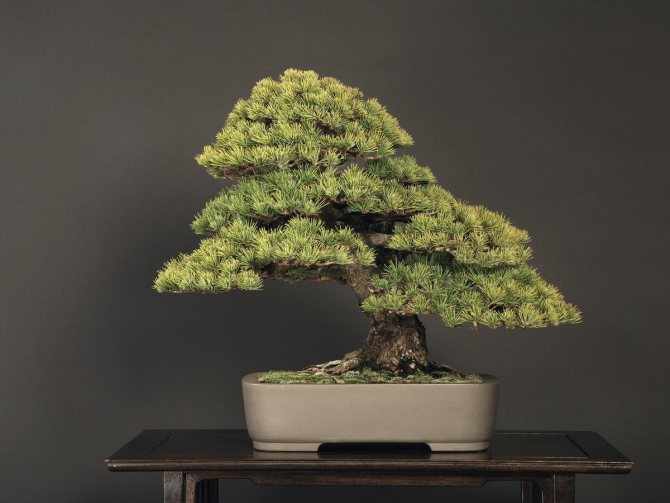

The pine crown is sensitive to correction and quickly takes the desired shape
Experts advise you to follow simple rules:
- the first pruning is carried out one year after planting;
- no more than a third of the crown can be cut at a time;
- resin is used instead of garden varnish;
- the cut is made at an angle of 45 °. The lower edge can rise above the upper one by no more than 2 mm;
- the cut is carried out at an average height. The resin should not run out too much;
- branches growing vertically are cut to external soil. Those that are tilted - to the inner;
- thick shoots are carefully cut down;
- if the place of the cut does not stop bleeding, it is treated with garden varnish.
Important! If the tree gets stuck in the resin, then the pruning went wrong. It is necessary to monitor the condition of the instruments. Dull blades can seriously injure wood.
Form a bonsai crown
Bonsai crown formation is necessary to give it beauty and grace. With regular cutting and other actions, you can get the desired shape of the plant: straight or inclined, symmetrical or asymmetrical, cascading, and others. It is the formation of the crown that will give the young tree the shape of a Japanese bonsai plant, so this is where the art of growing this plant begins.
Tip: When forming a crown, you need to know the following rules:
- The crown should be conical and divided into small tiers;
- The foliage of each branch of the tree should be as dense as possible.
Due to the observance of these simple rules, the crown of the tree will be well ventilated, the lower and upper layers of the tree will receive a sufficient amount of light, which contributes to the favorable microclimate of this miniature plant. Compliance with these rules will maintain the vitality of the bonsai.
The very process of crown formation is very painstaking and will take more than one day. First of all, the excess foliage is trimmed immediately after it is planted in the container, forming the future image of a tree, while the excess branches are cut off. After some time, it is necessary to remove new shoots, leaving only some of them. As a result of careful and unhurried work, you can form any desired crown shape.
To grow the branches of the tree in the right direction, a wire is used attached to the branches. A mature plant also requires regular trimming to maintain its shape and miniature silhouette.
How to grow bonsai from an oak acorn
Oak bonsai can be grown in two ways: acorns and seedlings. This process takes at least 30 years.
How to start growing bonsai
Growing bonsai begins with the choice of material. Acorns can be harvested from the forest or purchased from the store. They should be free of mold, wormholes and other damage. Healthy acorns are brown with a greenish tint.
The quality of the fruit is checked by soaking: the rotten ones will float to the surface and soften. Healthy acorns are dried and stored in a bag full of wood chips and moss to absorb the rest of the moisture. Germination will take at least two months. All this time, acorns are stored in the refrigerator.
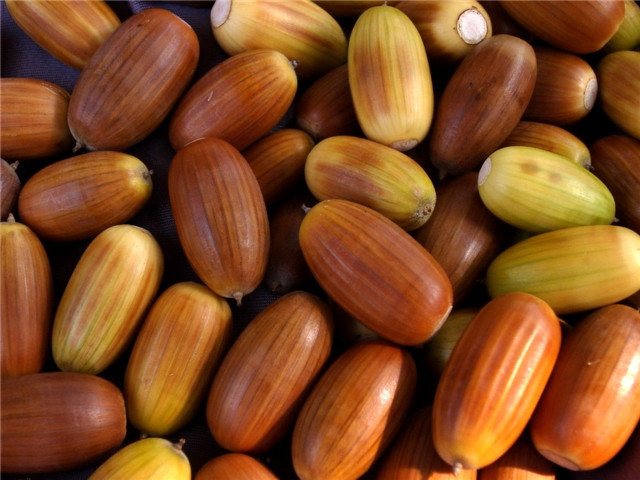

Sick acorns often do not have external defects, so they need to be soaked.
The disembarkation is carried out in stages:
- The oak is planted in the ground collected from the tree from under which acorns were dug. There should be some fallen leaves and branches in the ground.
- The container is chosen wide, but shallow (up to 10 cm). A grating is installed at the bottom and a drainage layer is poured. A centimeter layer of sand mixed with crushed stone is laid on top. Earth is added to it. It is better to lay the soil in a slide to ensure an even distribution of moisture.
- If the plant has taken root, after a month and a half, the backbone of the future bonsai is formed. A graceful bend is made with the wire, securing it to the outside of the pot.
Oak prefers a warm climate with high humidity. It is better to grow the tree on a windowsill, where it will be fully illuminated by the sun. For the winter, the roots are covered with dry foliage so that they do not freeze. The soil is moistened by immersion in a basin or container with water. Top watering is not recommended.
How to choose a plant to create a bonsai
To create bonsai from oak, cork or stone varieties are suitable. If seedlings are used as material, you need to choose specimens no higher than 15 cm.In order for the oak to take root better, it is recommended to collect the soil in which it grew.
The seedling must have a well-developed main root. If the small roots have not turned white, then they are not yet ripe. The leaves are carefully inspected for damage and dryness.
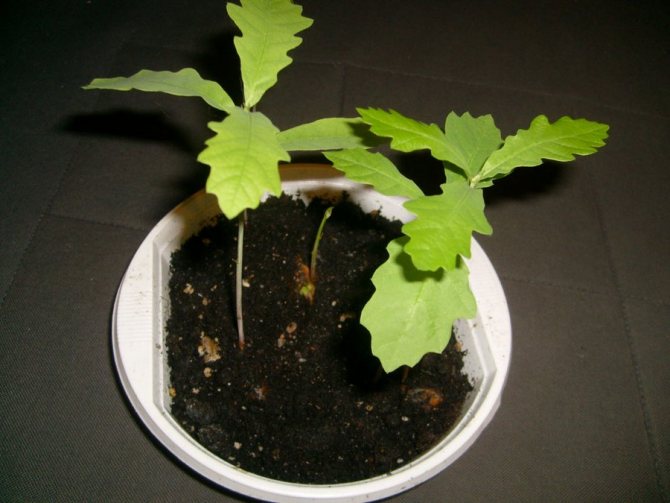

Healthy oak leaves are smooth, large, with a clean color
Growing method
The seeds themselves mainly differ in weight and type of seed coat. For a certain type of seed, one or another sowing method is suitable. Compliance with the rules will allow you to grow truly beautiful and healthy seedlings. Trees such as Japanese maple, hawthorn, juniper, hornbeam, quince require a preliminary freezing period. To do this, you need to place them in wet sand in a cool room. The rest period varies from six months to a year.
Seed pretreatment
In order for the seeds to germinate correctly, they must be processed in order to avoid disease or death. Before planting, the seeds are placed in water for a couple of days. Or also peat moss is used for germination. To accelerate the effect, you can break the hard shell of the seed. Then they are treated with Bordeaux liquid against diseases and the soil is disinfected.
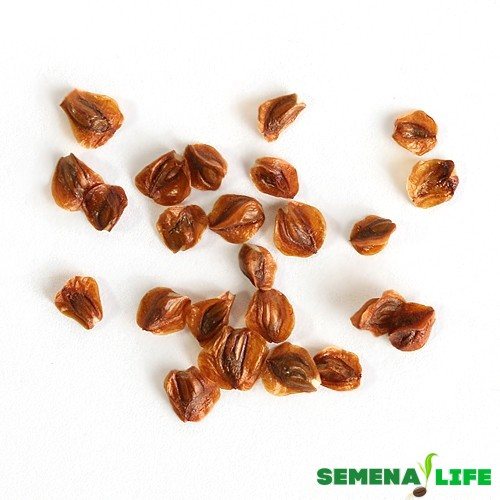

Seeds for Bonsai can be ordered online
For example, for fir, heat treatment of the soil with drainage is suitable. Usually, a linen tank is taken, in which two bricks are placed with the edges down. A bucket is placed on top so that it is tightly closed with a lid. As boiling water is poured, the upper edges of the bricks should protrude three centimeters from the water. Before that, holes are made at the bottom of the bucket, and gauze is placed on top of the bottom. It is necessary to warm up the soil for about 2-3 hours.
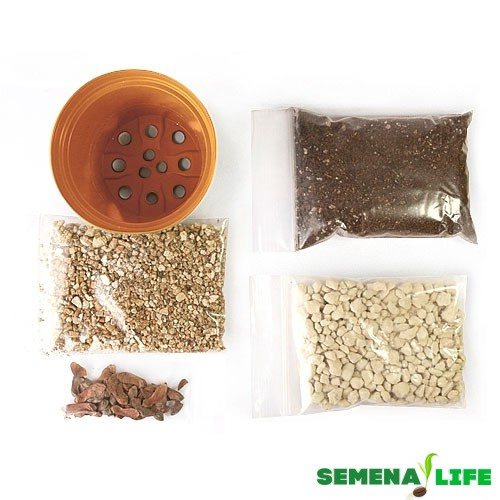

Ready set for growing Bonsai from seeds
There are other ways to sterilize soil - freezing... This is usually done in late autumn. The soil is poured into a bag and left in the yard or on the loggia before the onset of frost. After that, the soil is brought into the room for thawing for 10 days. Before that, it is advisable to water it with melt water from fresh garden snow. Then for 6 - 7 days, the ground is again exposed to the air. In this case, the temperature should be about -20 degrees. These processes of freezing and thawing of the soil must be done 2 - 3 times for the complete destruction of harmful microorganisms and weed seeds.
Planting bonsai, soil
The seed is planted in spring, late summer or autumn. Peat pots, pre-filled with a mixture of sand and peat in equal proportions, are ideal for planting. Or they use the land for cacti and coarse sand. It is impossible to fill the soil mixture to the brim, you must leave three centimeters. Above is a centimeter layer of prepared soil. Then the whole mixture should be lightly pressed with a piece of wood, laid out the seeds and covered with a layer of sand, no more than two diameters of the planted seed.Press down again with a piece of wood and pour a little water over it.
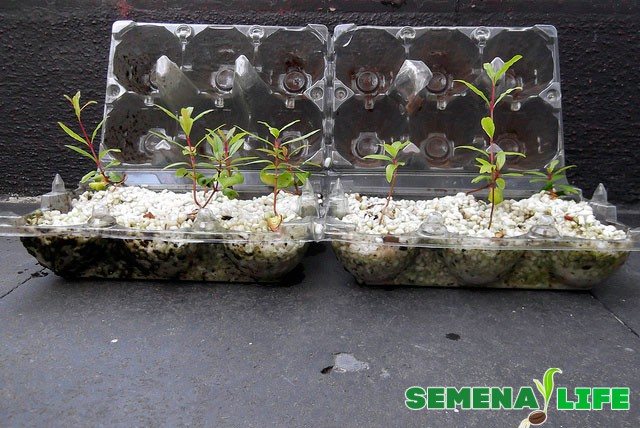

Mini greenhouse for Bonsai from egg carriage
The container is covered with glass or plastic wrap to create a greenhouse effect. Then all the contents are exposed in a place protected from the sun with a temperature of no higher than 15 degrees. The soil should always be moderately moist, not dry out.
Seedling care
After the first shoots appear, air must be supplied into the container. To do this, several holes are made in the polyethylene, or you can put a chip under the edge of the glass. As the first leaves appear, the seedlings should be fully opened.
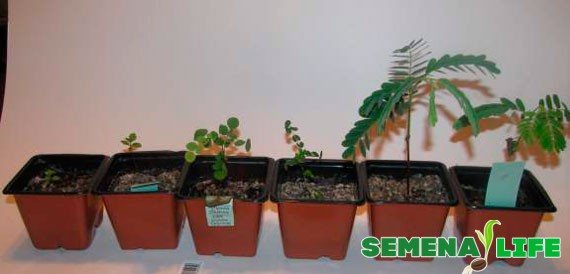

Re-rooting is required in the interval from one to three months. This is cutting the taproot - 2/3 of its length. Sometimes a special hormone is inoculated to stimulate root formation.
Plants need to be fertilized, it is better to do this at the beginning of summer. Fertilizers should be added to the soil in small portions. When the seedling reaches a height of 10 centimeters, it is transplanted into a flower pot. The plant must begin to accustom to sunlight. Don't forget to do periodic shaping. Depending on the type of bonsai, it is produced at the age of several years.
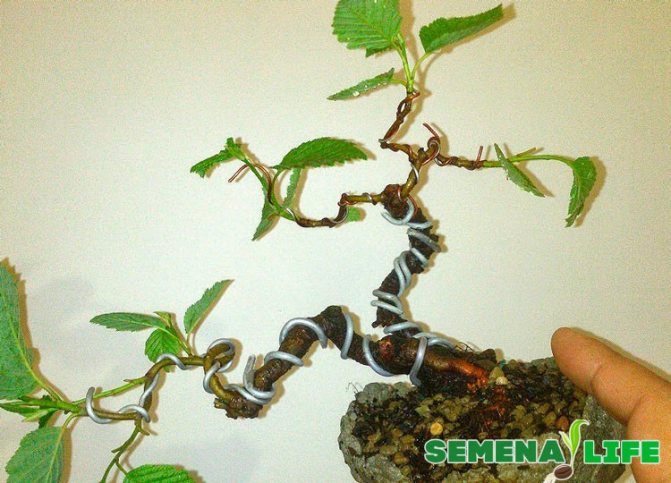

Using simple instructions and the tips suggested above, we can get a really beautiful and healthy tree of our dreams.
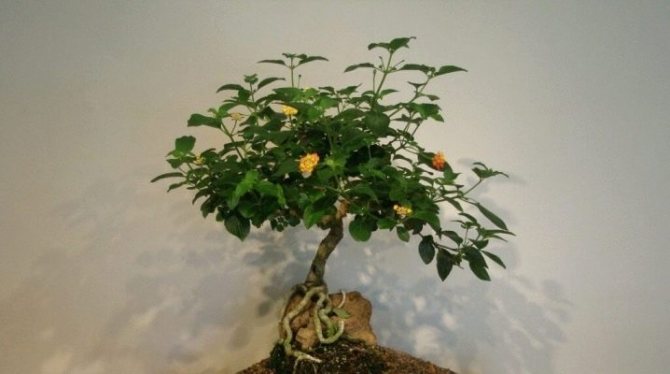

Today, flower growers have a large selection of crops that can be grown at home. The art of growing a copy of a tree in miniature "bonsai" stands out. This can be done by any grower using the seeds of the selected crops and, of course, with proper plant care.
Plant or shrub: the ongoing controversy of scientists
For a long time, scientists have been arguing about what the herbaceous willow is - a tree or a shrub. It can be noted that these disputes are not at all devoid of meaning. And all because the features of willow do not quite fit into the classical description of the tree. From standard terminology, it is known that it must have a stiff outer layer, a central trunk growing upward, a mature specimen at the level of a human chest of 7.62 centimeters, and also have a long-term development cycle.
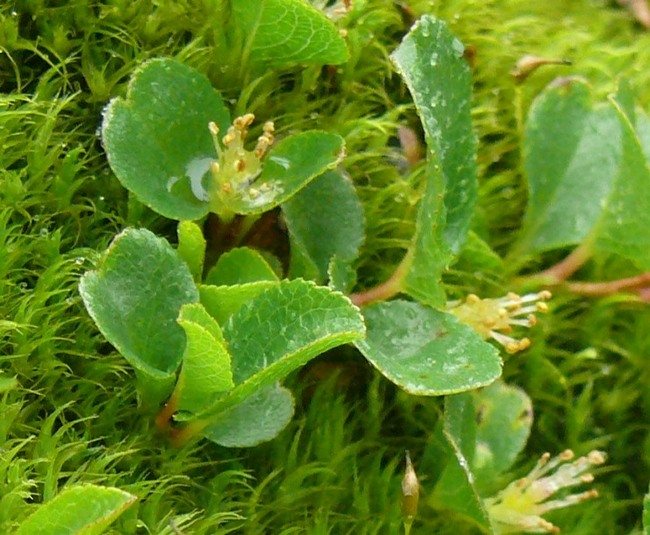

Based on the above descriptions, it can be seen that herbaceous willow is really difficult to call a tree. However, it has been proven that the plant belongs to the willow family. In addition, this smallest tree in the world has female and male earrings (the former are red, and the latter are yellow). Therefore, the plant can justifiably be classified as tree-like, despite its tiny size and the absence of some signs of a tree.
Dwarf willow sizes
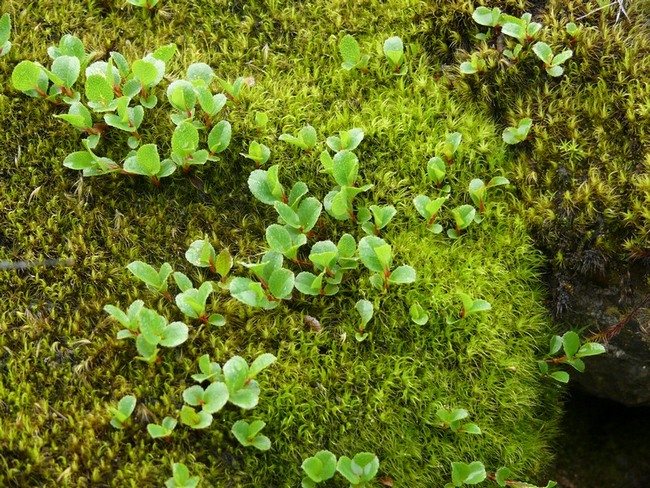

This plant usually reaches no more than 7 centimeters in height. But the height of seven centimeters will make the grassy willow a real "giant" among its kind, since, as a rule, it does not grow more than two centimeters. Due to its small size, this smallest tree in the world is quite difficult to see in moss, where it simply drowns.
You can notice this plant only by a couple of leaves that stick out. The leaves are round and shiny green. Both in length and in width, the leaves reach only a couple of centimeters. Such tiny dimensions of the tree are due to the conditions in which the plant grows - being close to the ground, it shelters from the strongest winds, and it also uses all kinds of shelters in rocks and soil, which have the heat necessary for the growth of the tree.
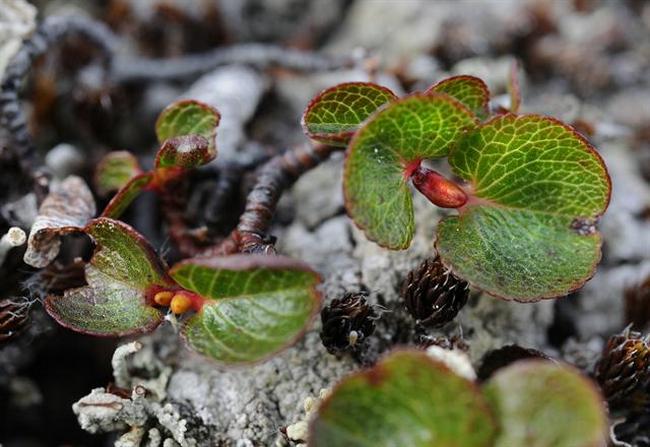

External appearance
Bonsai of pine and other plants should completely resemble a tree that grew in natural conditions and even through the leaves have clearly visible branches and a strong trunk with clearly visible roots. It is necessary to plant a home bonsai in a shallow vessel of a simple shape with a discreet color.
Trees grown using this method are usually small: the largest plant is 120 centimeters tall, the smallest is less than five. In this regard, the following classification of plants is distinguished:
- Large - height from 60 to 120 cm;
- Medium - from 30 to 60 cm;
- Small - from 15 to 30 cm;
- Miniature - from 5 to 15 cm;
- Tiny - up to 5 cm.
The most popular are indoor bonsai from five to thirty centimeters: they are so beautiful, fragile and graceful that, causing involuntary awe, they create the impression of belonging to the amazing magical land of miniature things.
Ways to use indoor trees
Ornamental trees for the home are the choice of owners of spacious real estate. They will help to place bright accents, harmoniously fit into the style of country, Provence, rustic, Mediterranean. Planted in stylish black or metallic containers, such representatives of the flora will be appropriate in ultra-modern interiors.
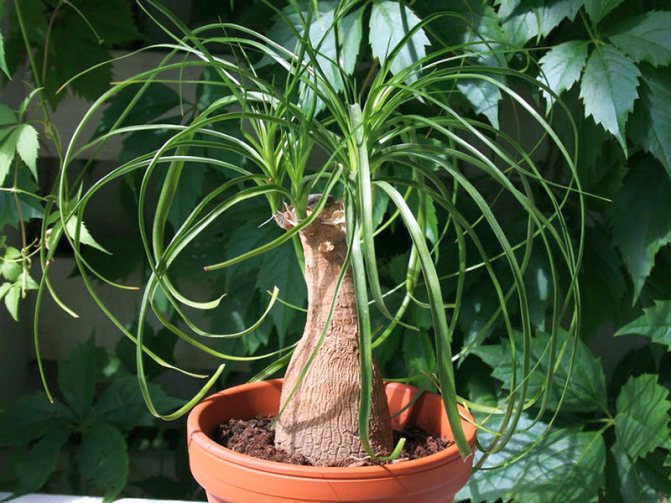

Nolin bottle tree - an original natural decoration of the room
Importance in the interior
House trees are an easy way to give your home originality and identity. At the same time, they give rise to coziness and emphasize the special taste of the owner. Such plants look good in an antique-decorated room or the mysterious East. And tiny bonsai trees can be a decorative element that promotes relaxation. In the East, the practice of caring for a bonsai garden is popular to restore peace and quiet to oneself.
Here are some possibilities for using living trees in interior design:
- Place plants growing in tubs about 1.5 meters high on either side of the sofa or chair. They will help you completely relax, make a mental trip to the forest.
- They can be used to decorate office space, shops, studios, catering establishments. The main thing is that the selected breed grows in conditions suitable for it and looks harmonious against the background of the situation as a whole.
- You don't have to be limited to just trees. Some create a real tropical forest in their home: mosses and ferns find shelter under the crown, vines hang from the ceiling. It turns out a very beautiful space, the only drawback of which is the laboriousness of care.
- Large plants are used to highlight functional areas.
Note! There is a special direction of interior design, phytodesign, which involves the use of not only living plants, but also trunks and branches. Twigs and branches are suitable for creating crafts - decorative ornaments, accessories for animals, for example, scratching posts for cats.
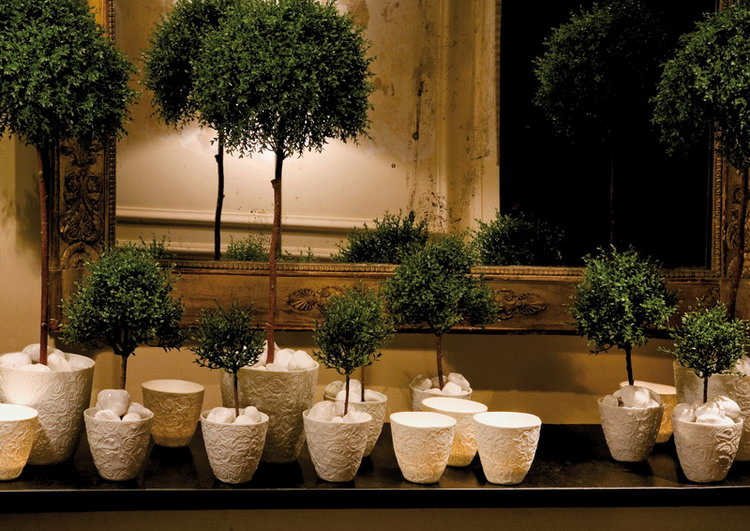

Exquisite compositions from living plants are a sign of the refined taste of the owner
Mini potted versions
The oriental art of growing bonsai trees - bonsai - is also a popular trend in phytodesign. The homeland of bonsai is China, but the Japanese managed to bring the technique to perfection.
For cultivation in this manner, conifers and deciduous species are suitable, both those grown in the region and overseas guests. To give a dwarf shape, these trees are shaped in a special way.
Important! It is best to grow bonsai in poor soil to prevent overgrowth of the crown.
Bonsai style allows you to grow more than 300 species of small trees, including blue maple, white pine, lemon, birch, cedar, sakura and many others. The standard plant height is no more than 1 meter. The required shape is given with the help of a wire.
Plants for growing in an apartment
A home tree in a pot is an original element of a room interior. To minimize the care of the plant, you should choose a suitable variety. Suitable for landing in:
- Bottle tree.
- Various citrus fruits: lemons, oranges. They can even be grown from the seed of a purchased fruit.
- Coffee and laurel trees.With proper care, some owners even managed to get a crop.
- Juniper.
- Palms and ficuses. These are classic potted plants, they are not perceived as exotic.
- Indoor maple. A tree up to 1.5 meters tall with a long elegant flowering in winter.
- Serpentine tree. The name was given to him by the specific color of the leaves, imitating the skin of a reptile.
You can choose other varieties, the main thing is that they are unpretentious in care, they tolerate the forced lack of light well. A brand new pot in which a unique plant grows will help the owner to survive a lot of pleasant minutes.
Plants in a flat vessel
The art of bonsai (translated from Japanese means "plant grown in a tray") is the process of growing in a small small vessel an accurate, but reduced to a miniature size, a copy of a tall tree grown in natural conditions.
The homeland of this fascinating art form is China, where it originated about two millennia ago, and six centuries later, together with the Buddhists, it ended up in Japan, where it developed: the Japanese not only improved the methods of growing graceful trees, but also systematized them (Japanese bonsai from Chinese is distinguished by great grace).
If we talk about Japanese art, it must be borne in mind that it is not just a process of growing a bonsai, but a whole philosophy, since the person doing this must have the appropriate attitude: be wise, benevolent, delicate and have a sense of justice.
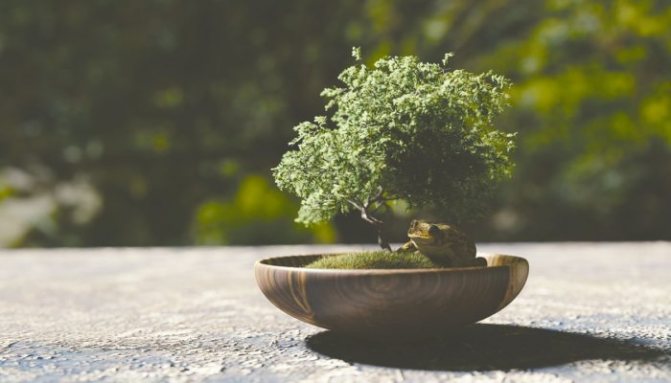

Sakura - the symbol of Japan
Since the art of bonsai in the twentieth century became extremely popular, this approach to growing miniature trees by Europeans was somewhat simplified: those who want to have such a miracle in their homes, just take the work seriously, with love and show maximum attention to the plant. In this case, miniature trees are quite capable of living for more than a hundred years, uniting several generations of the family with their presence.

